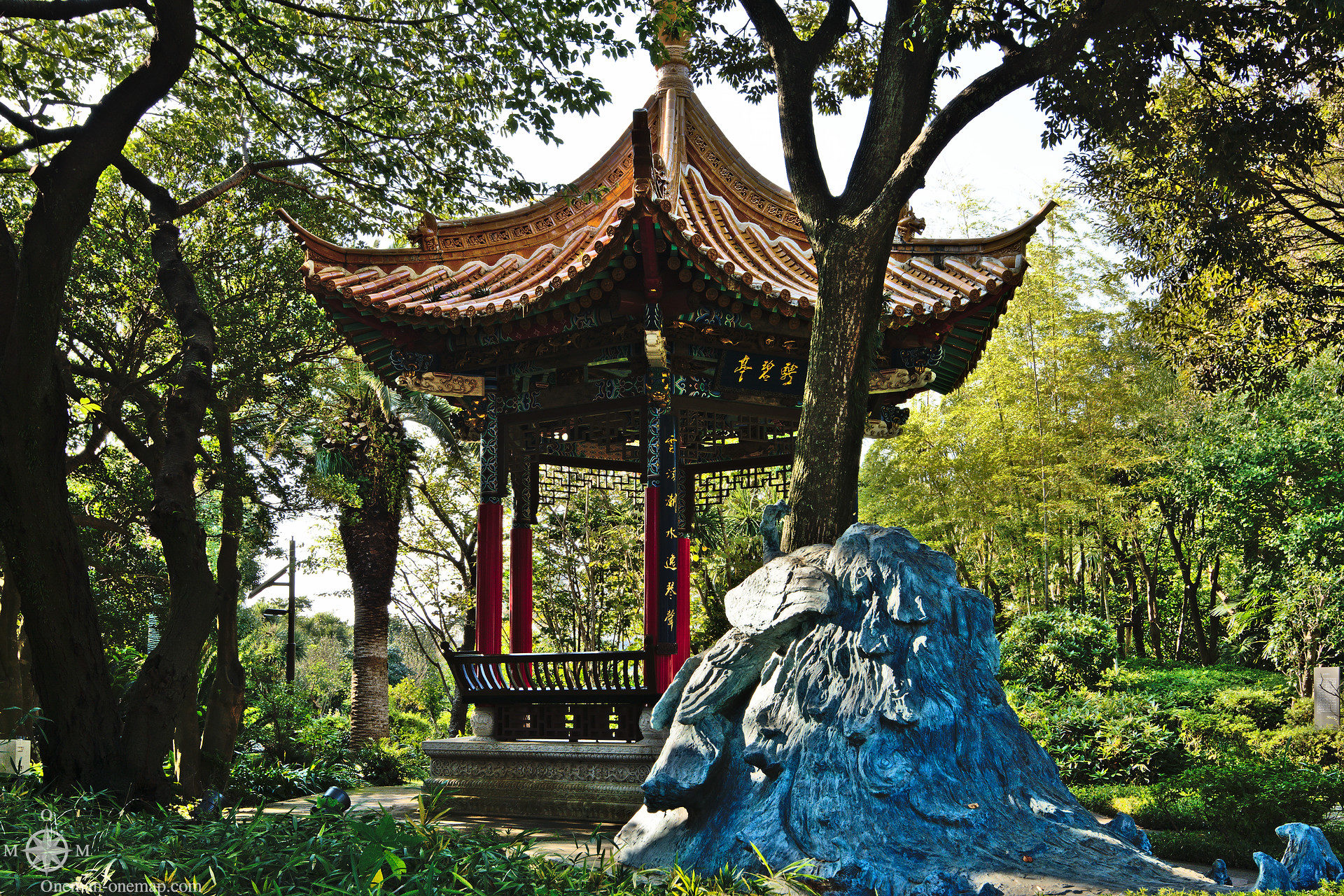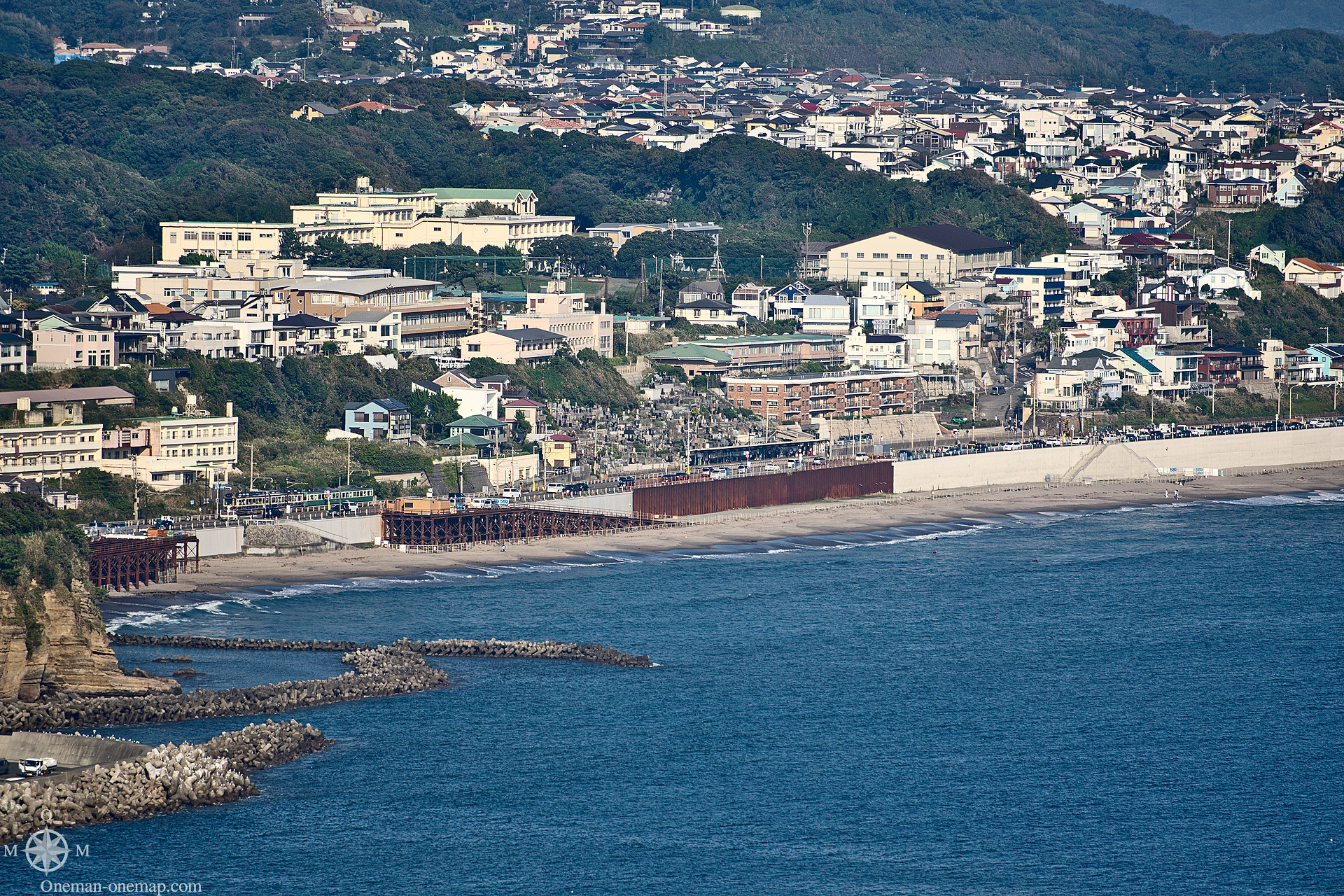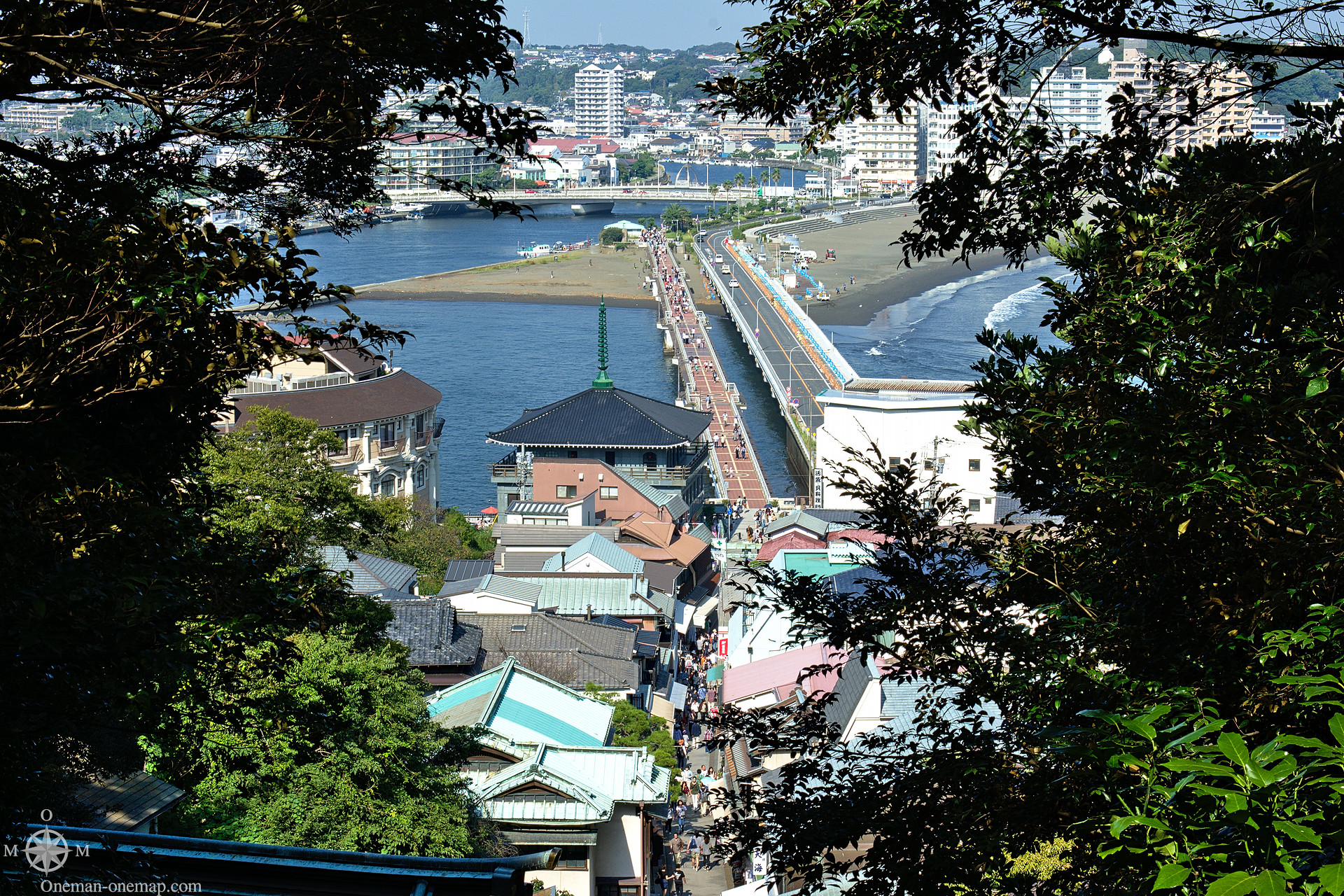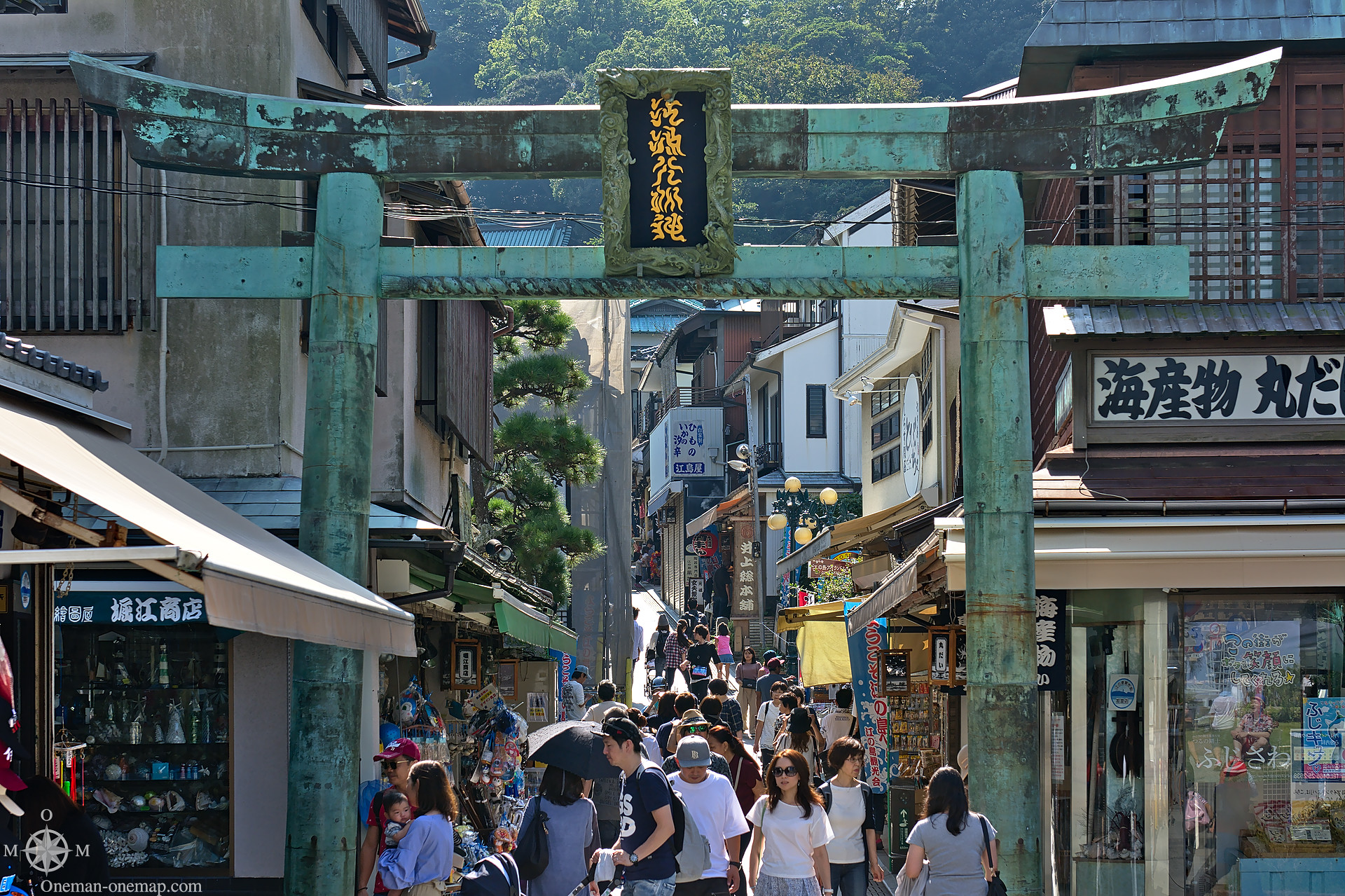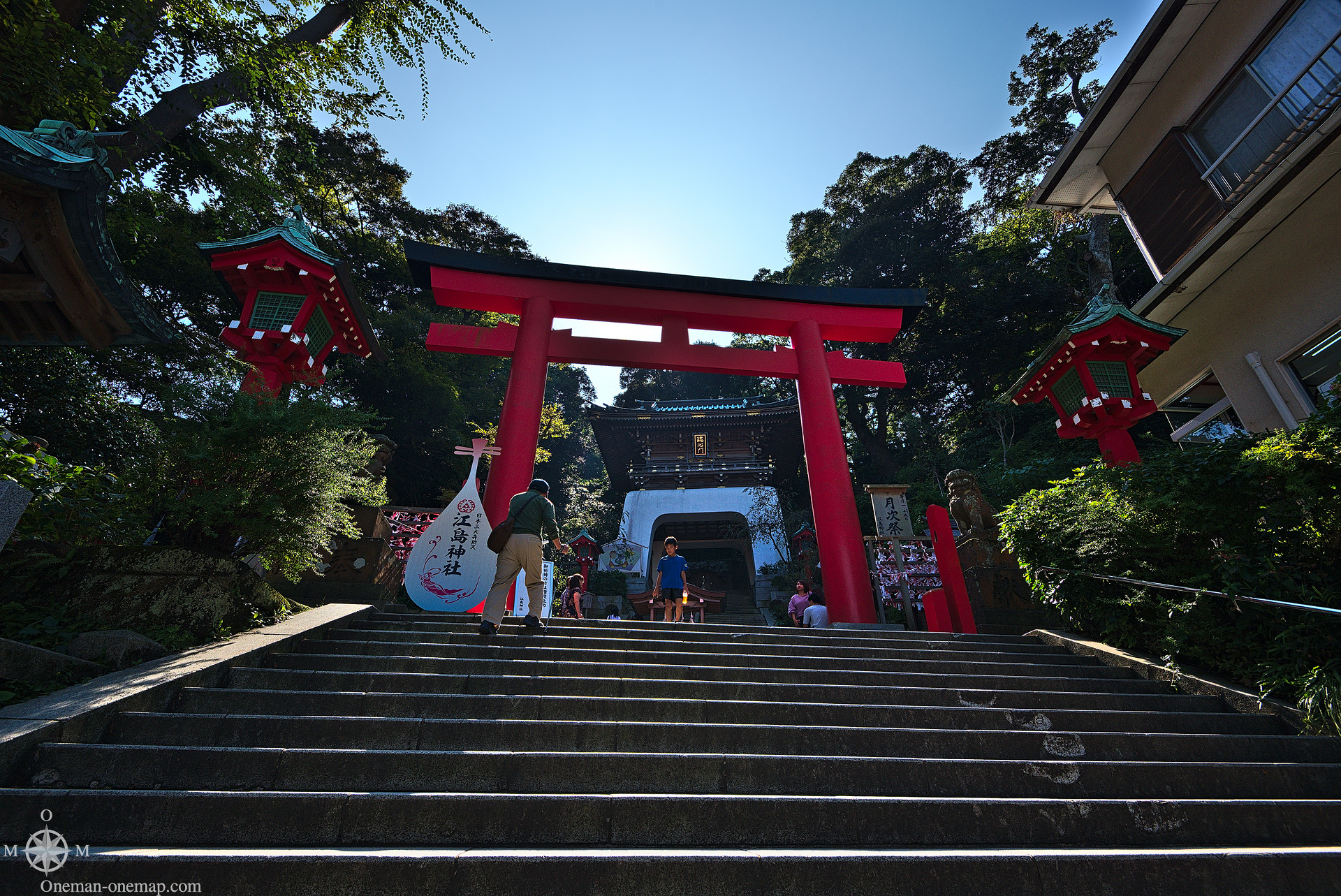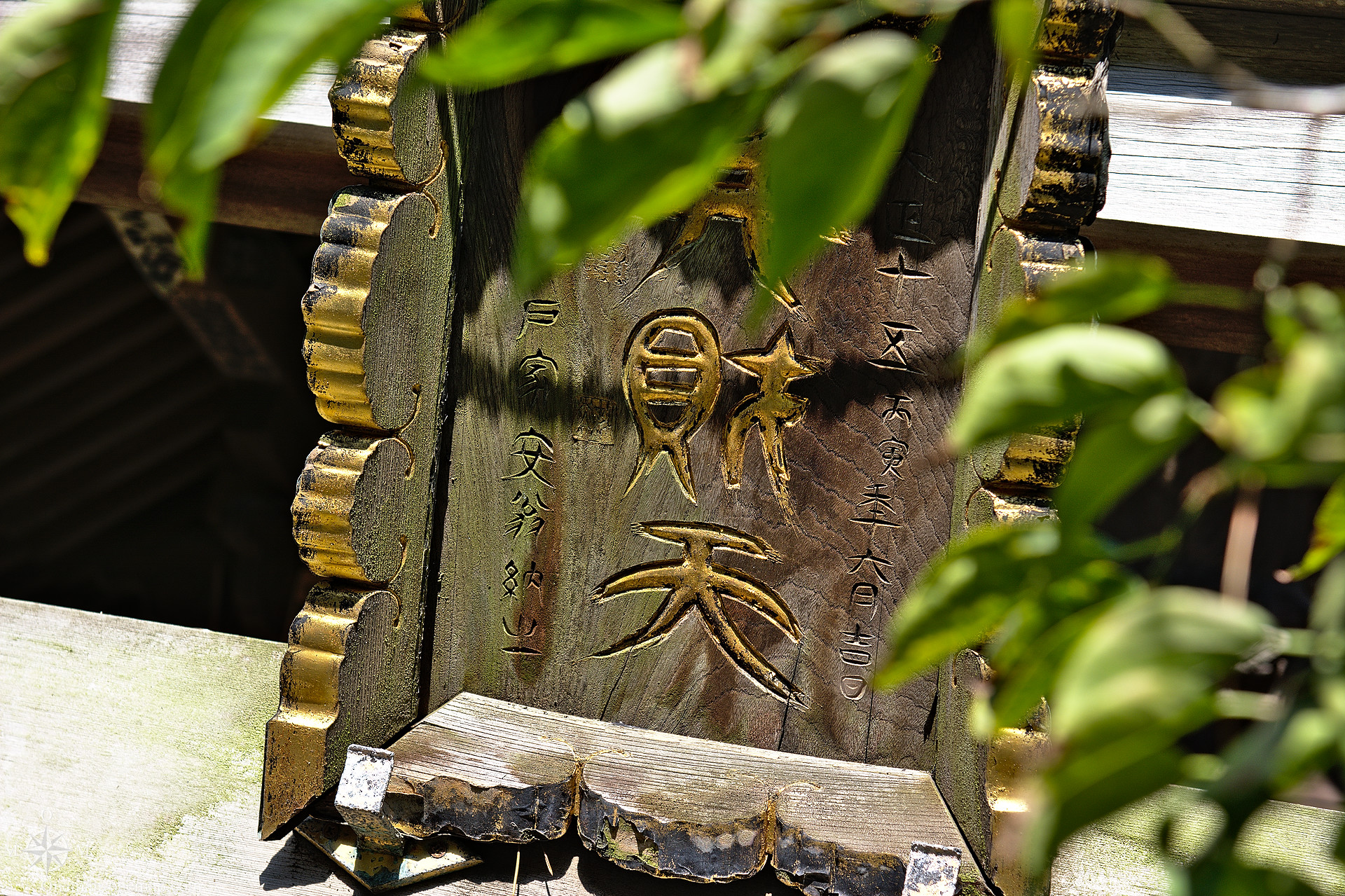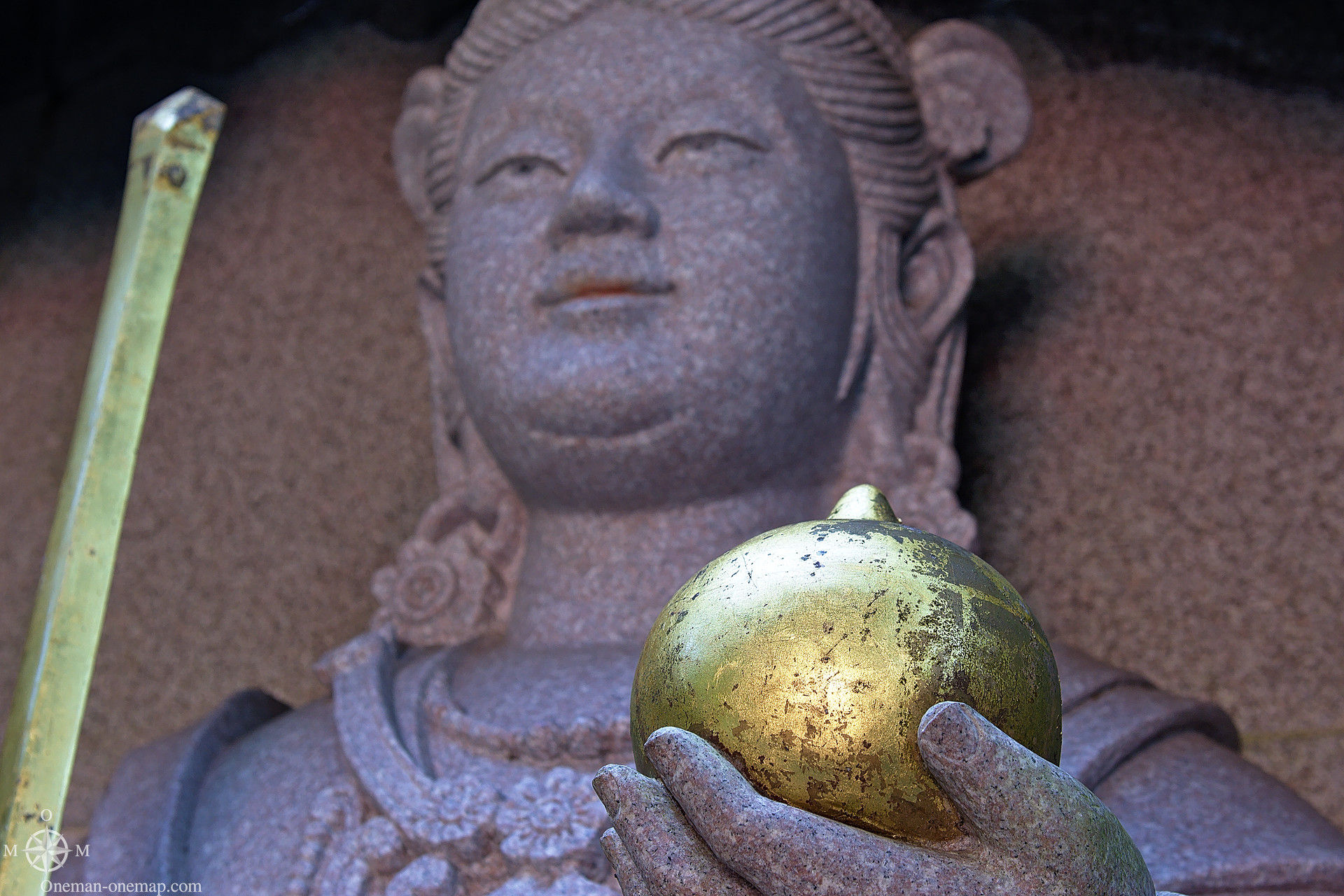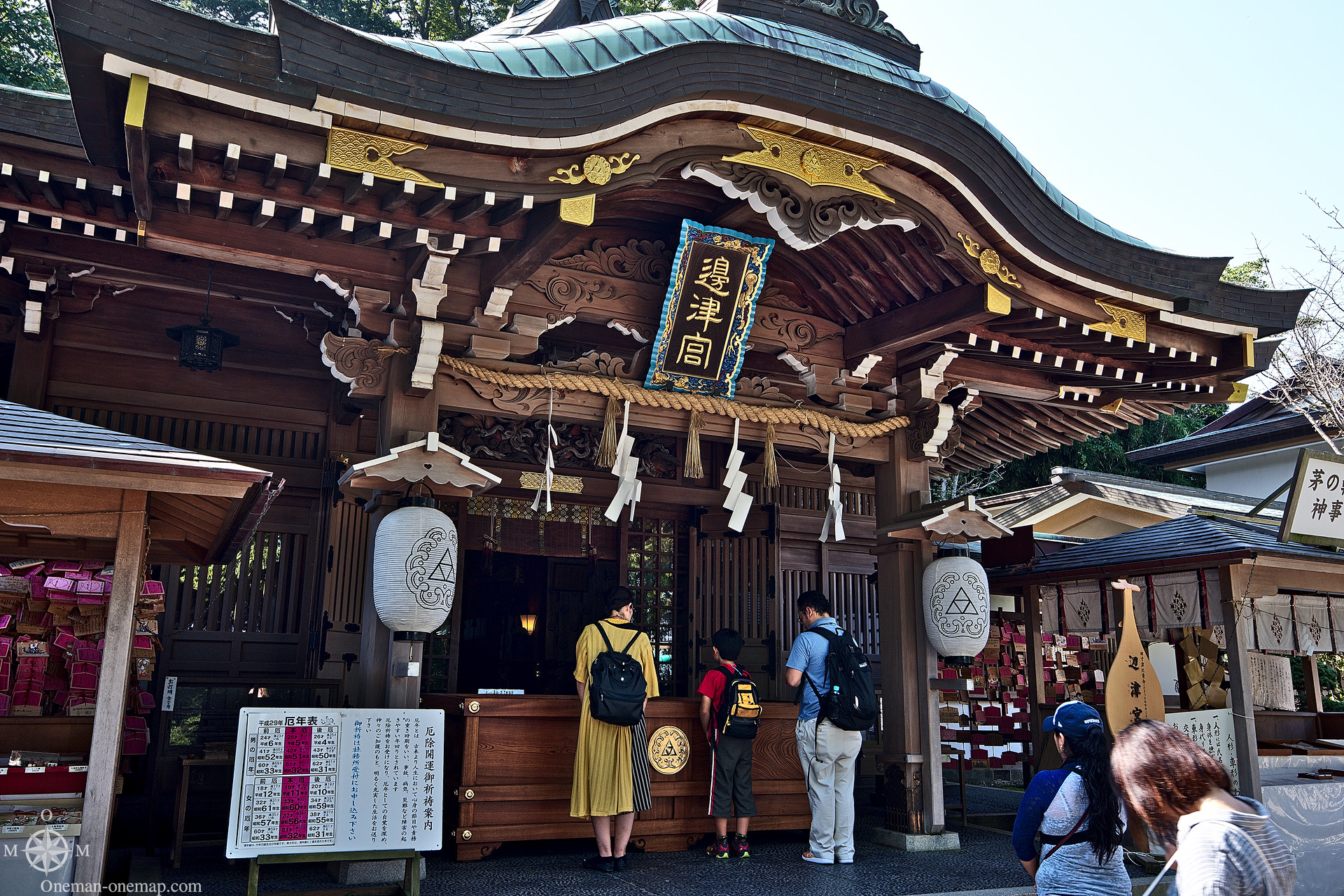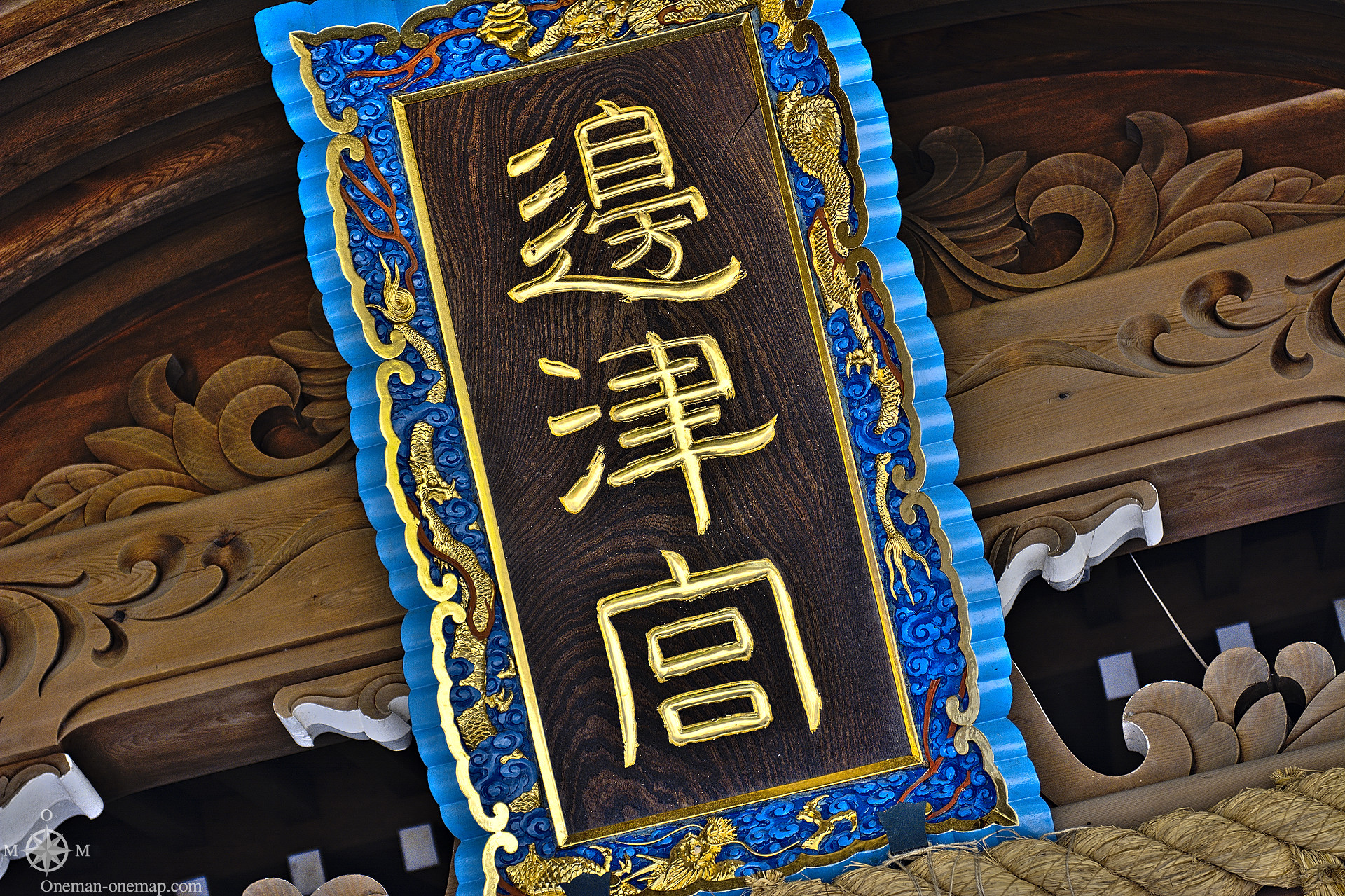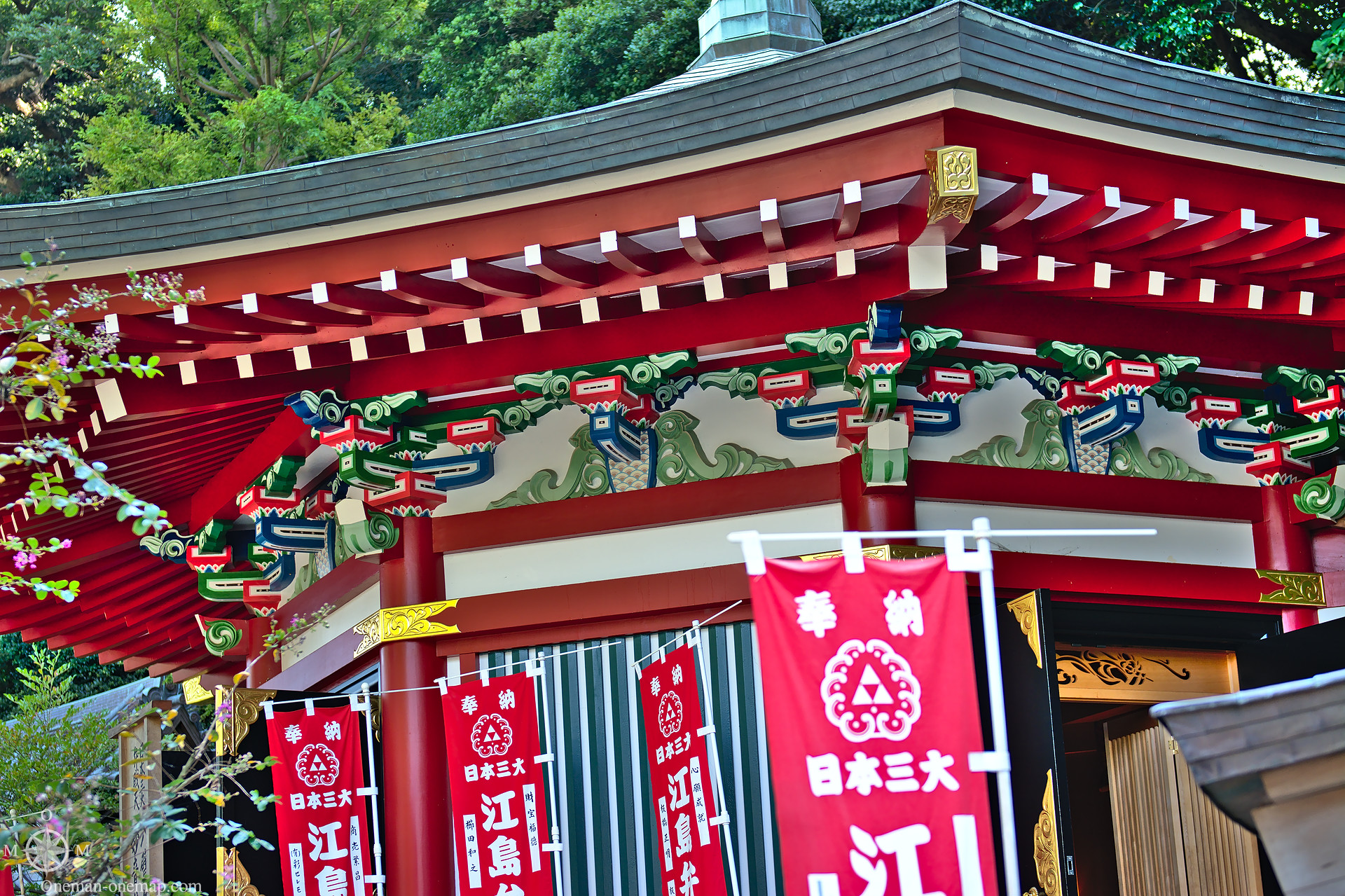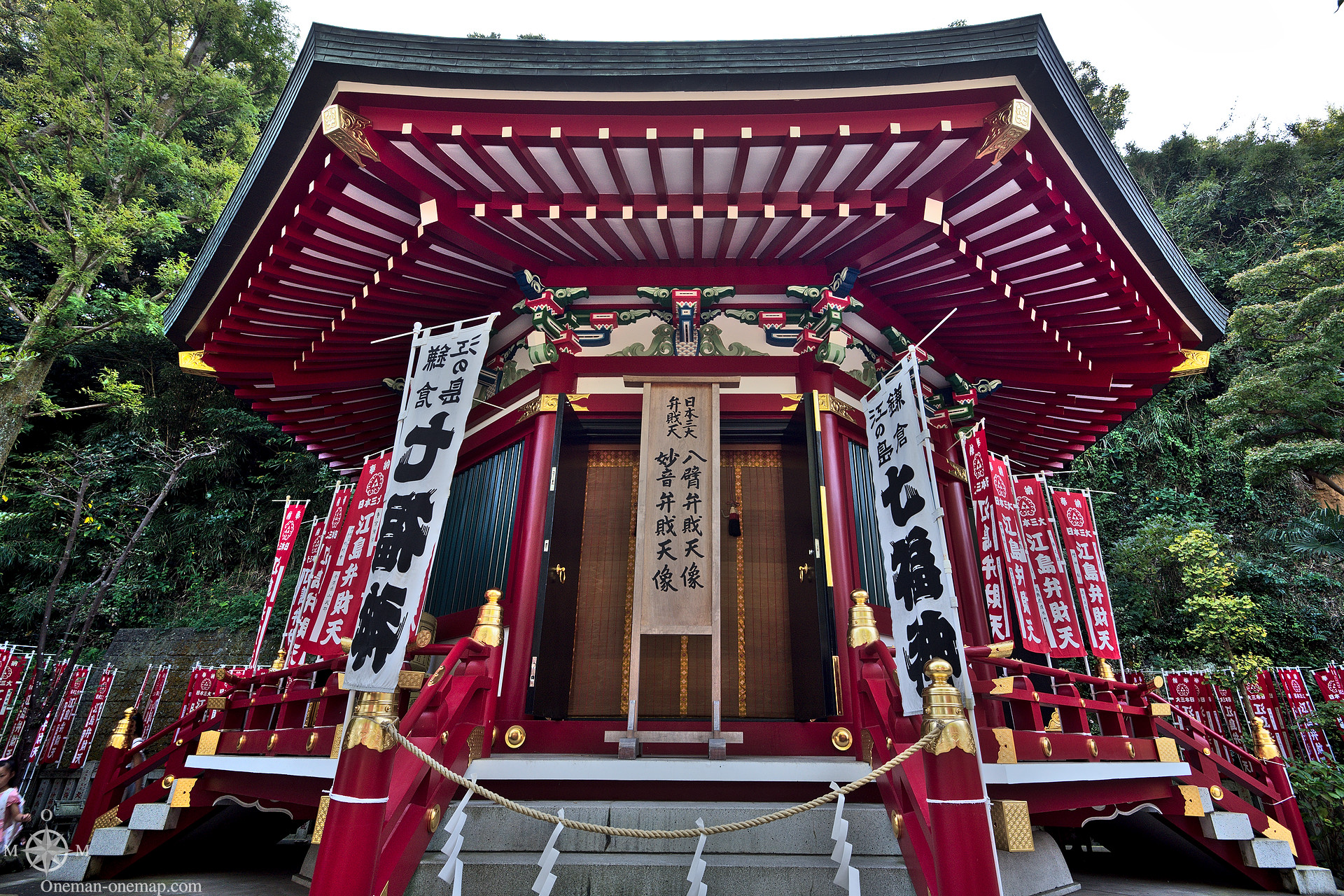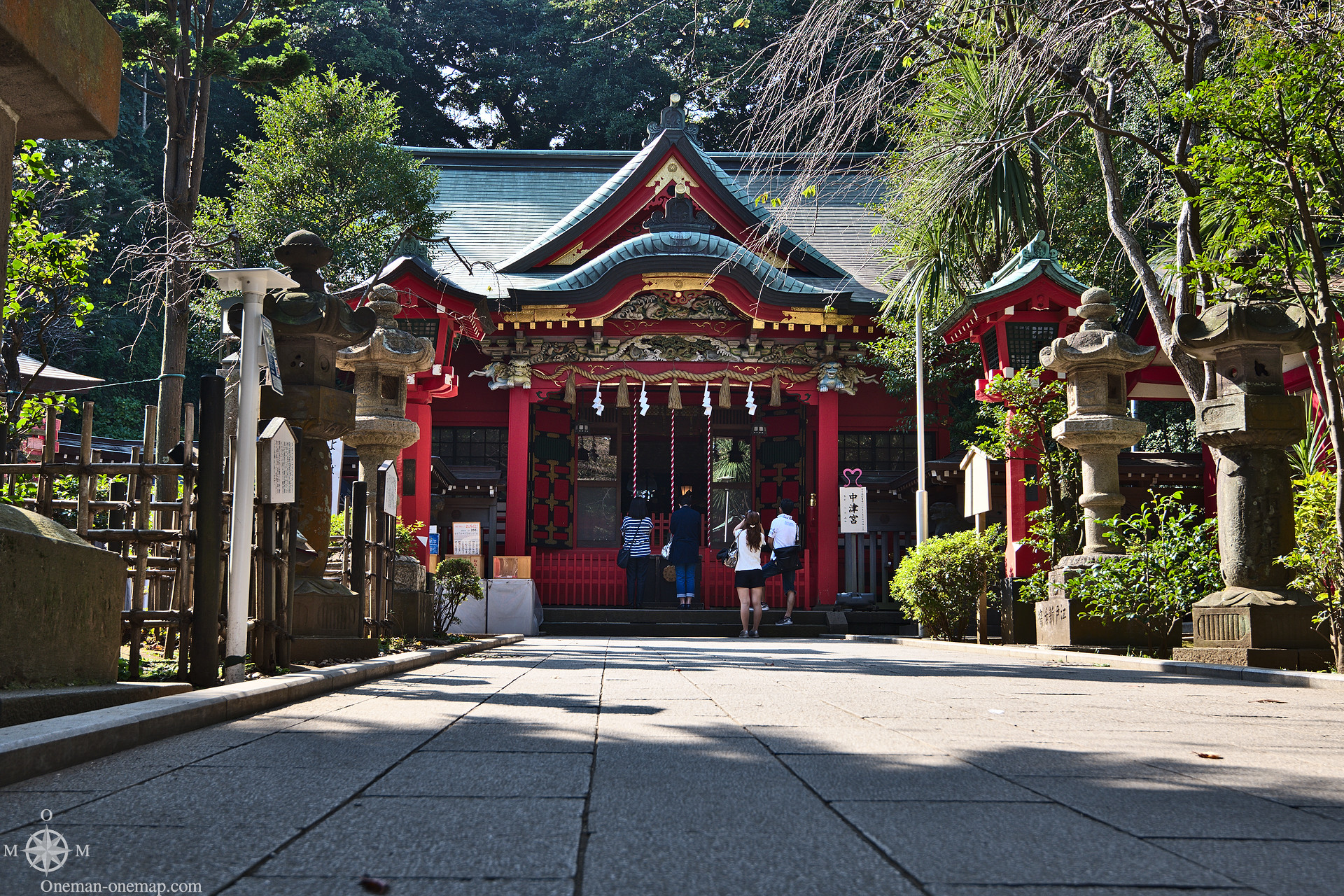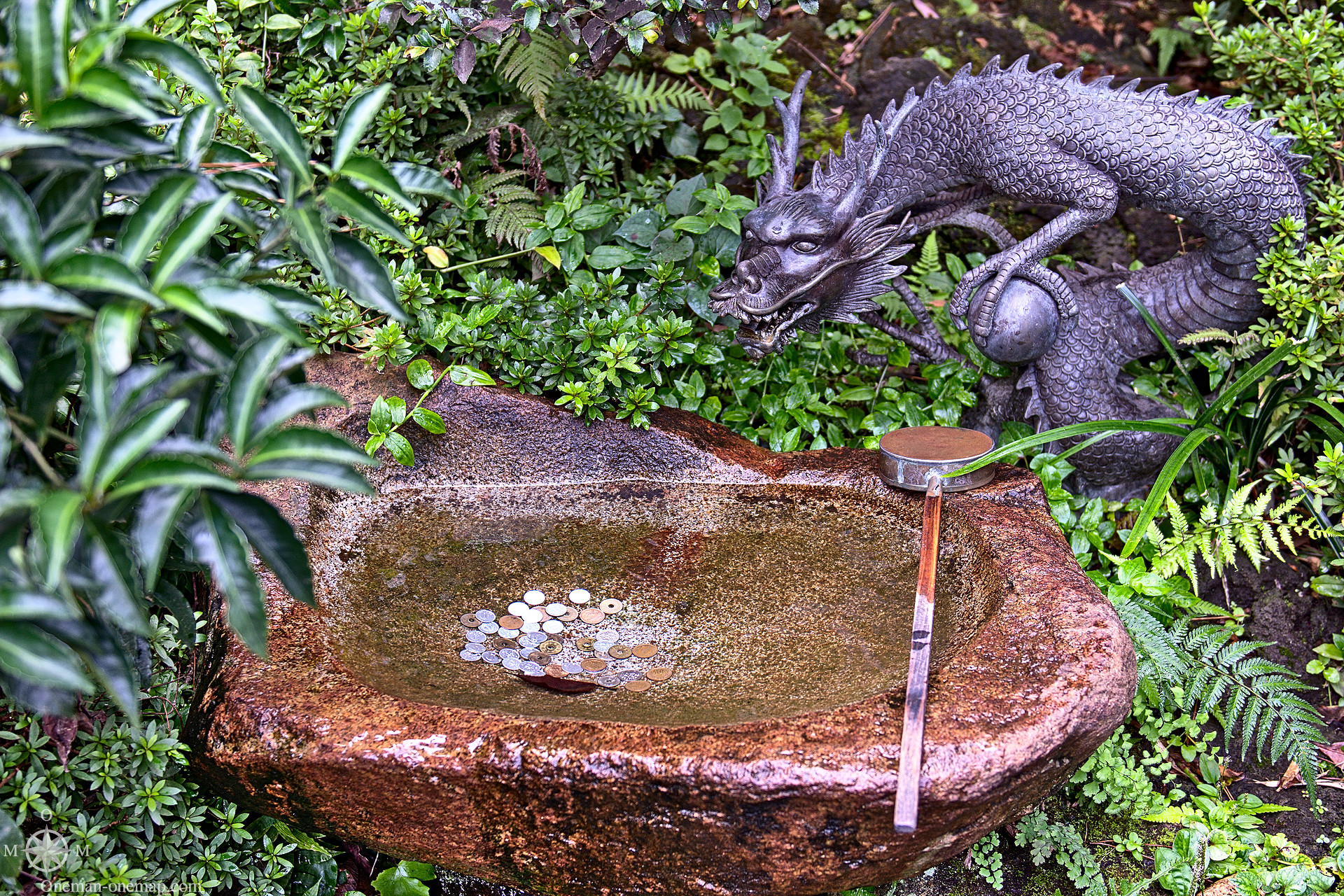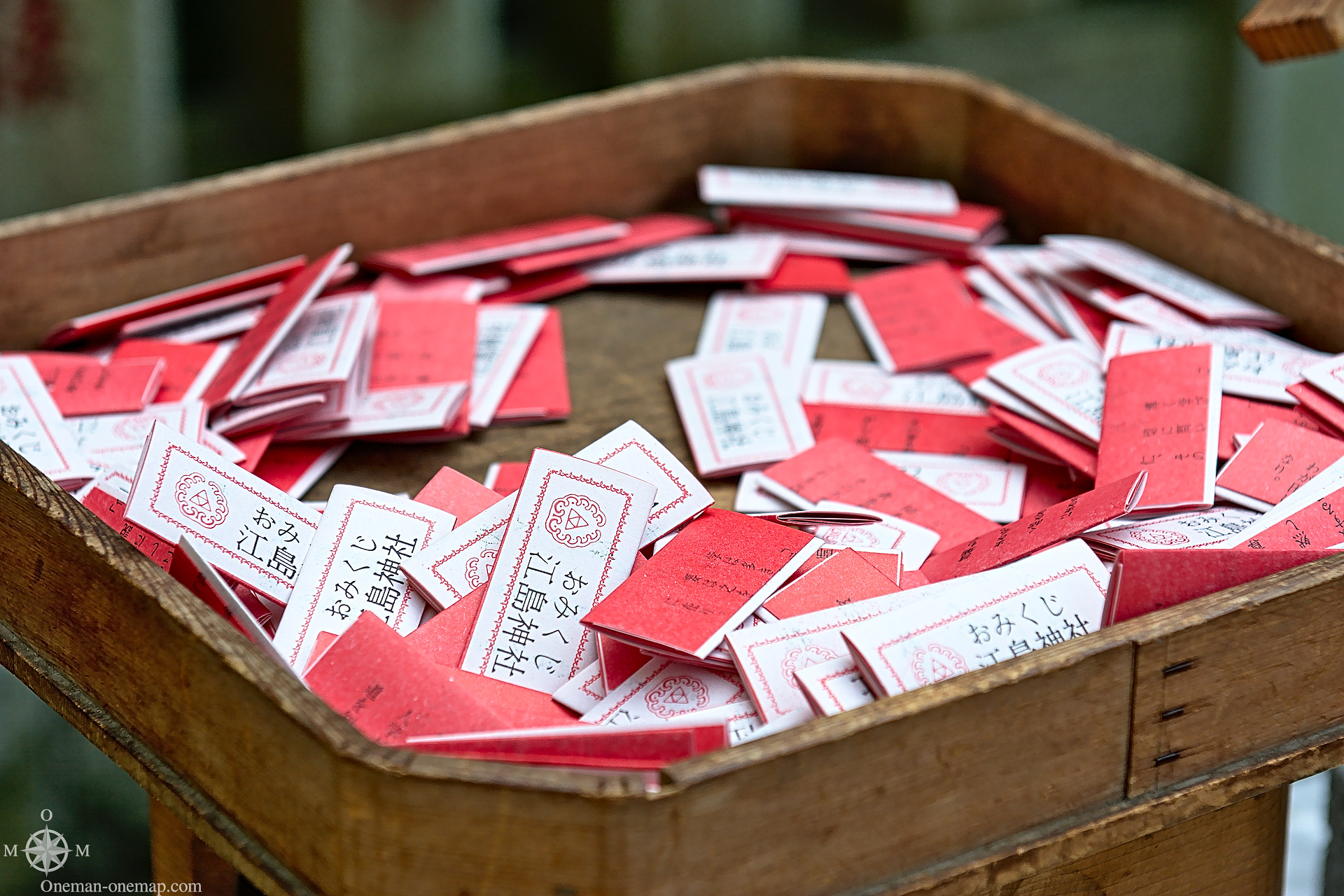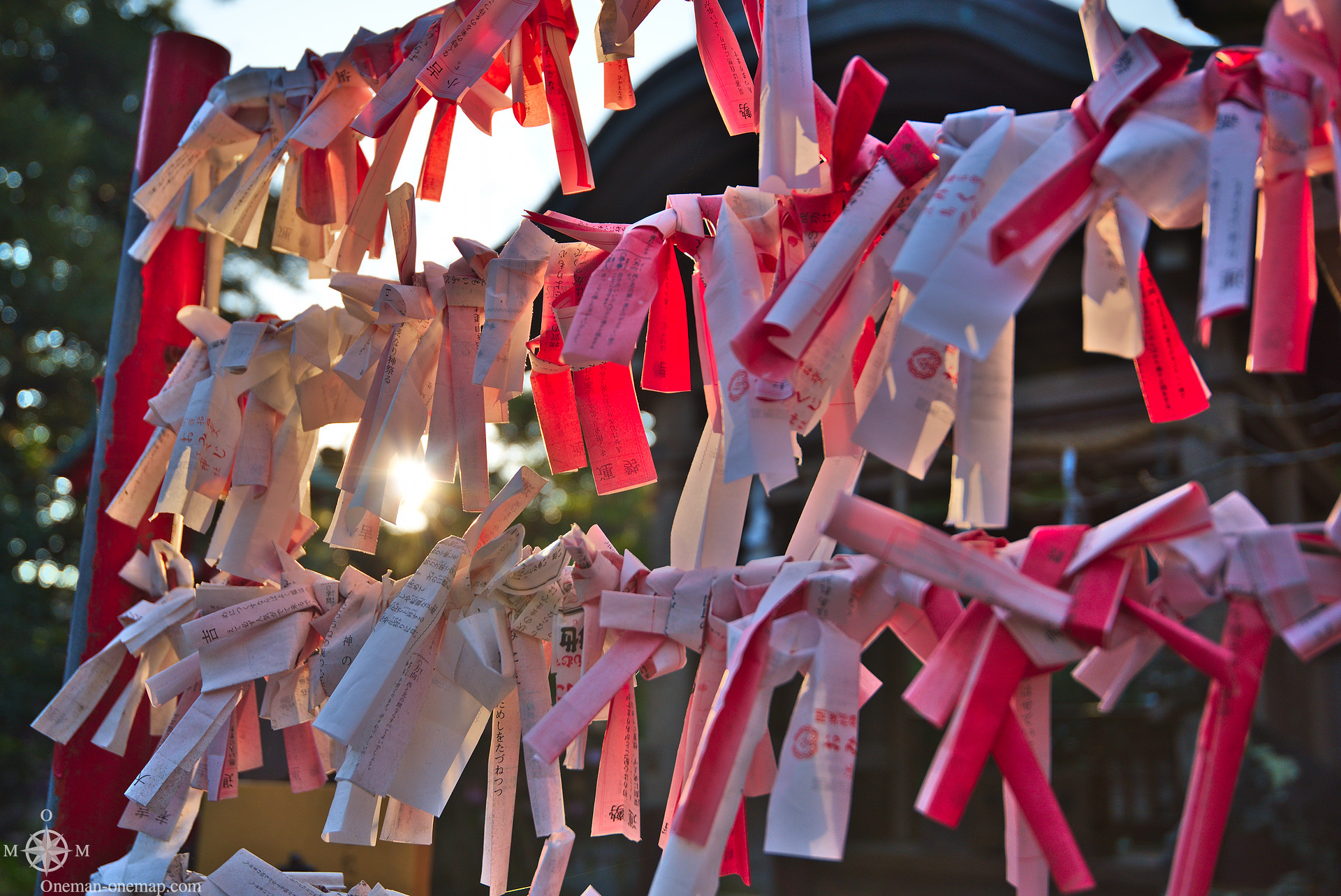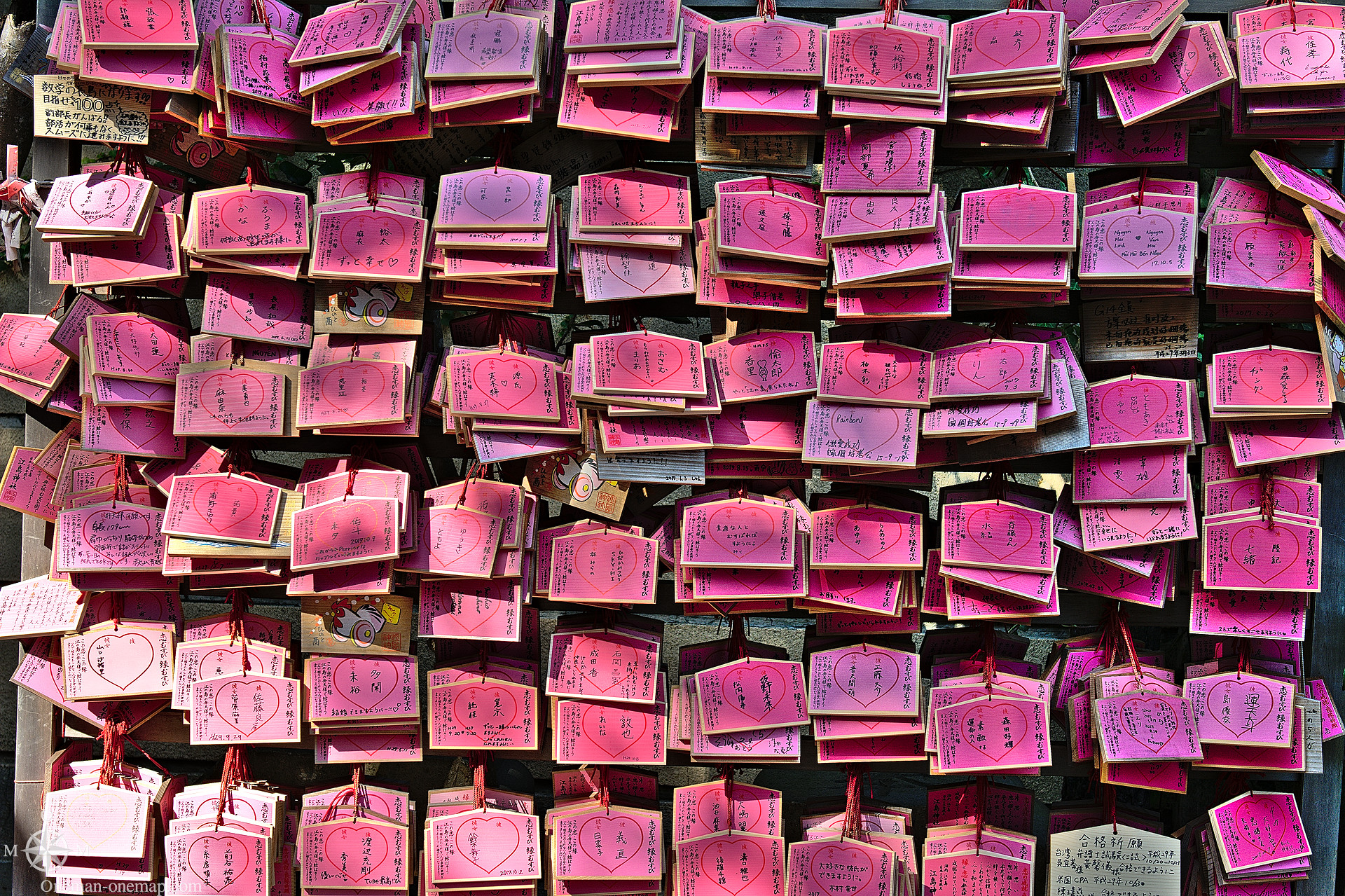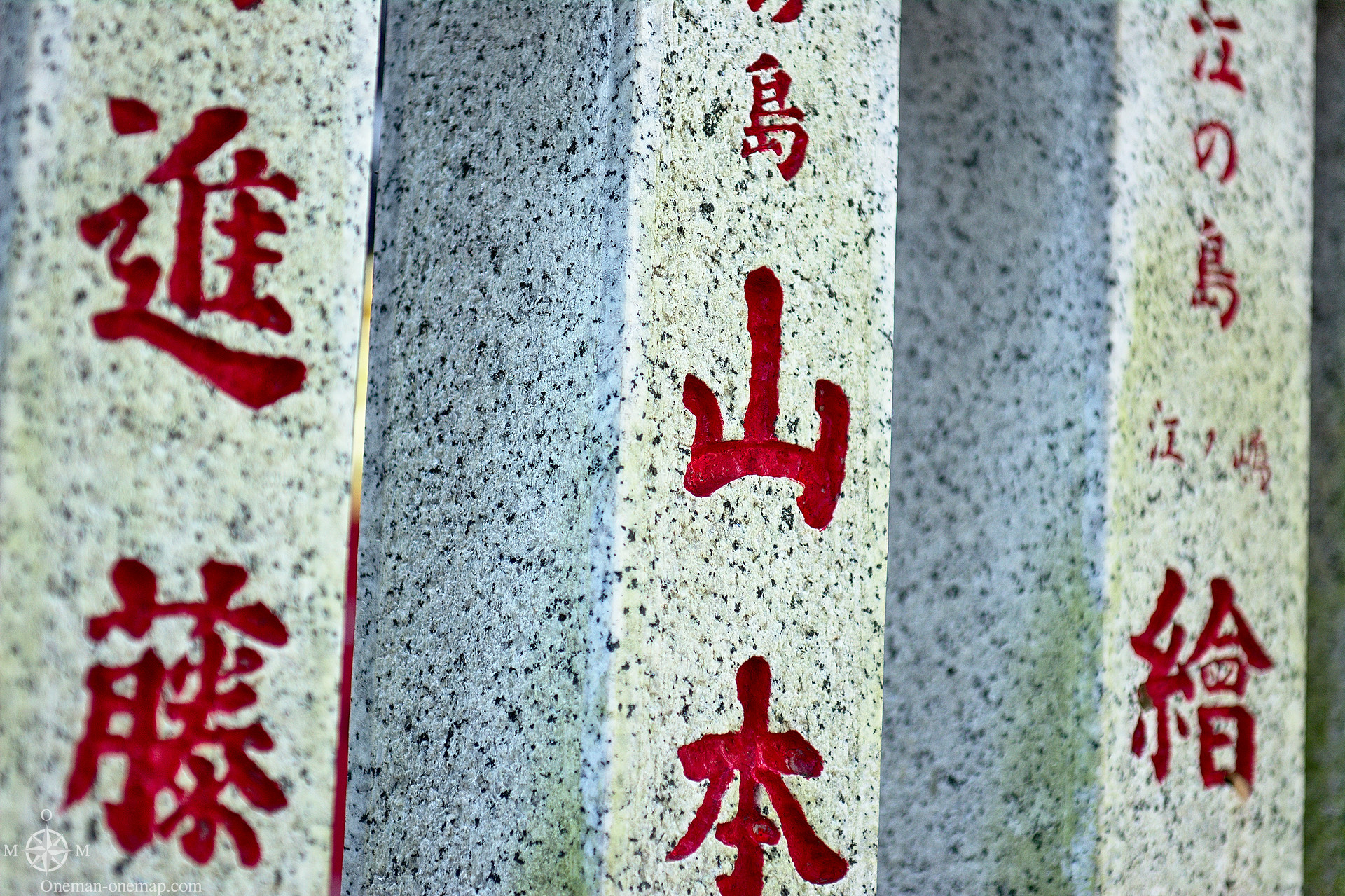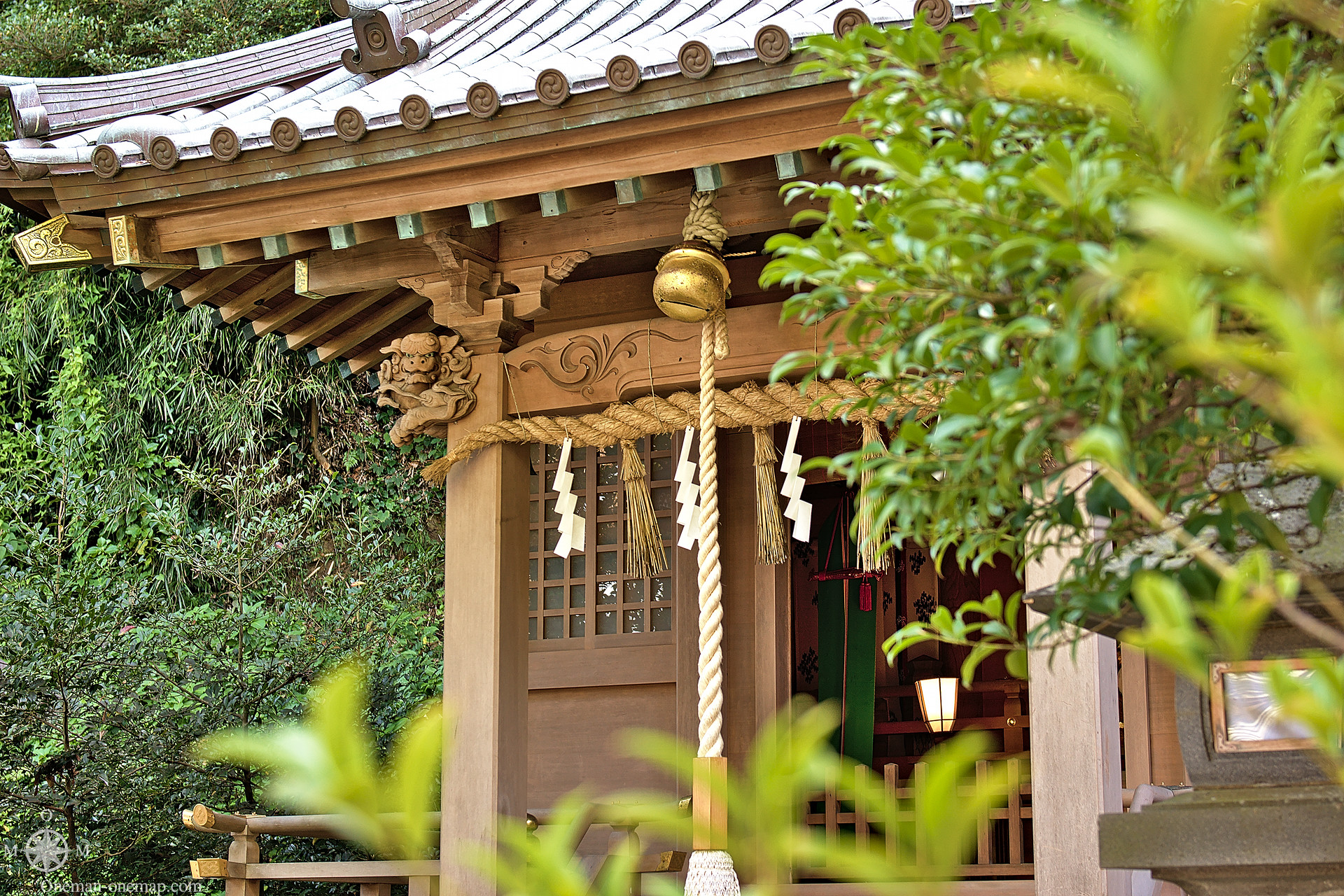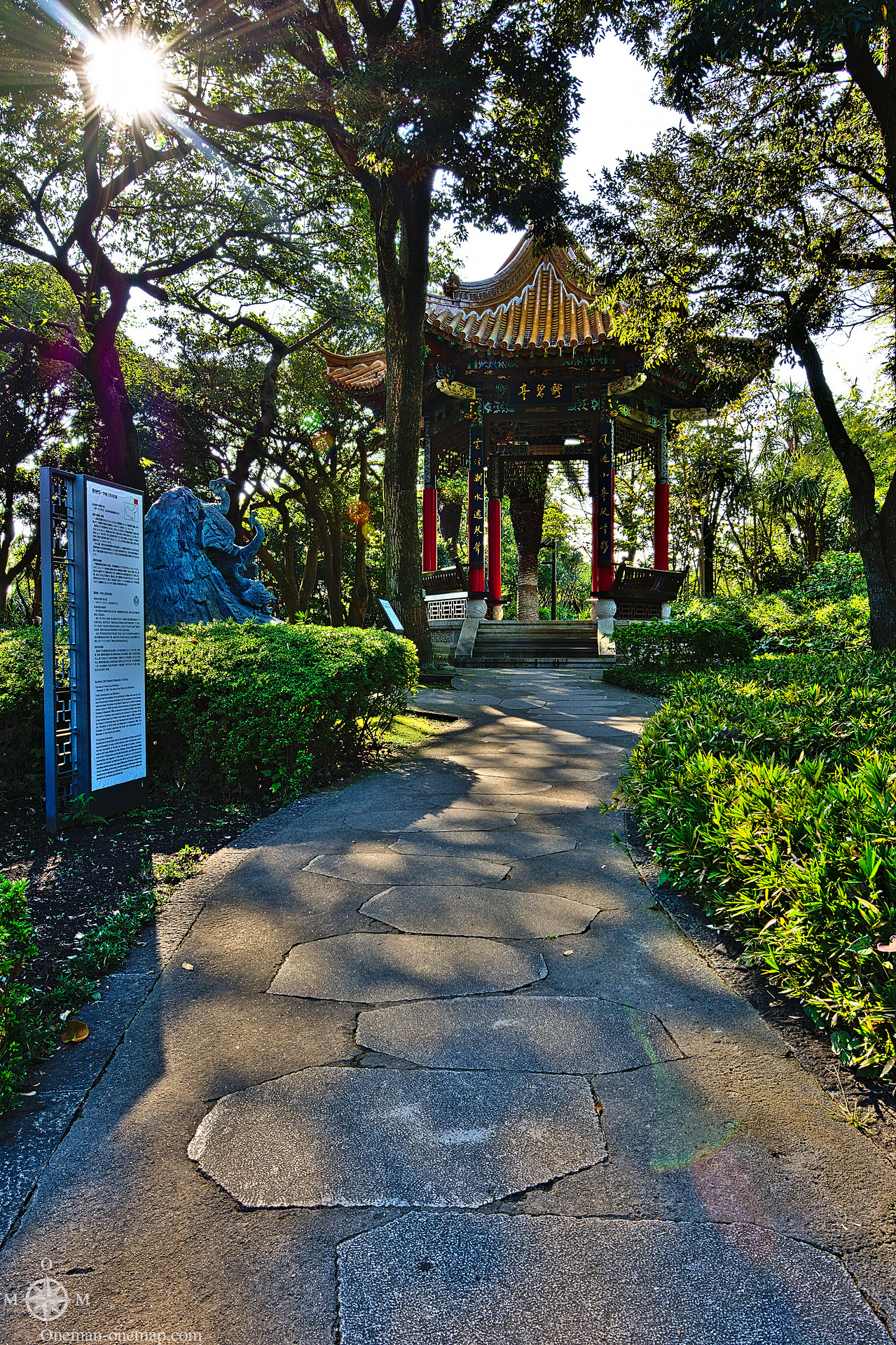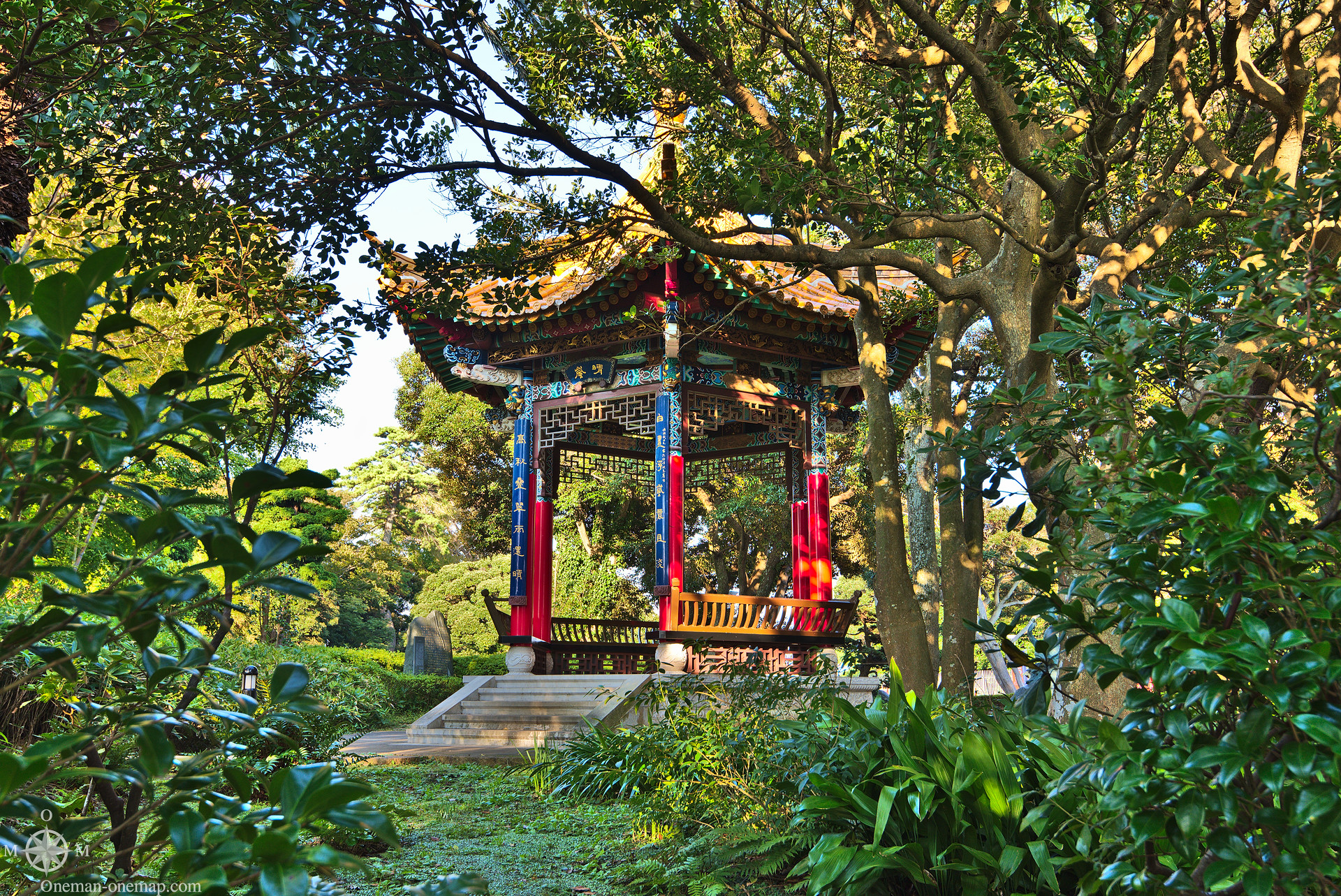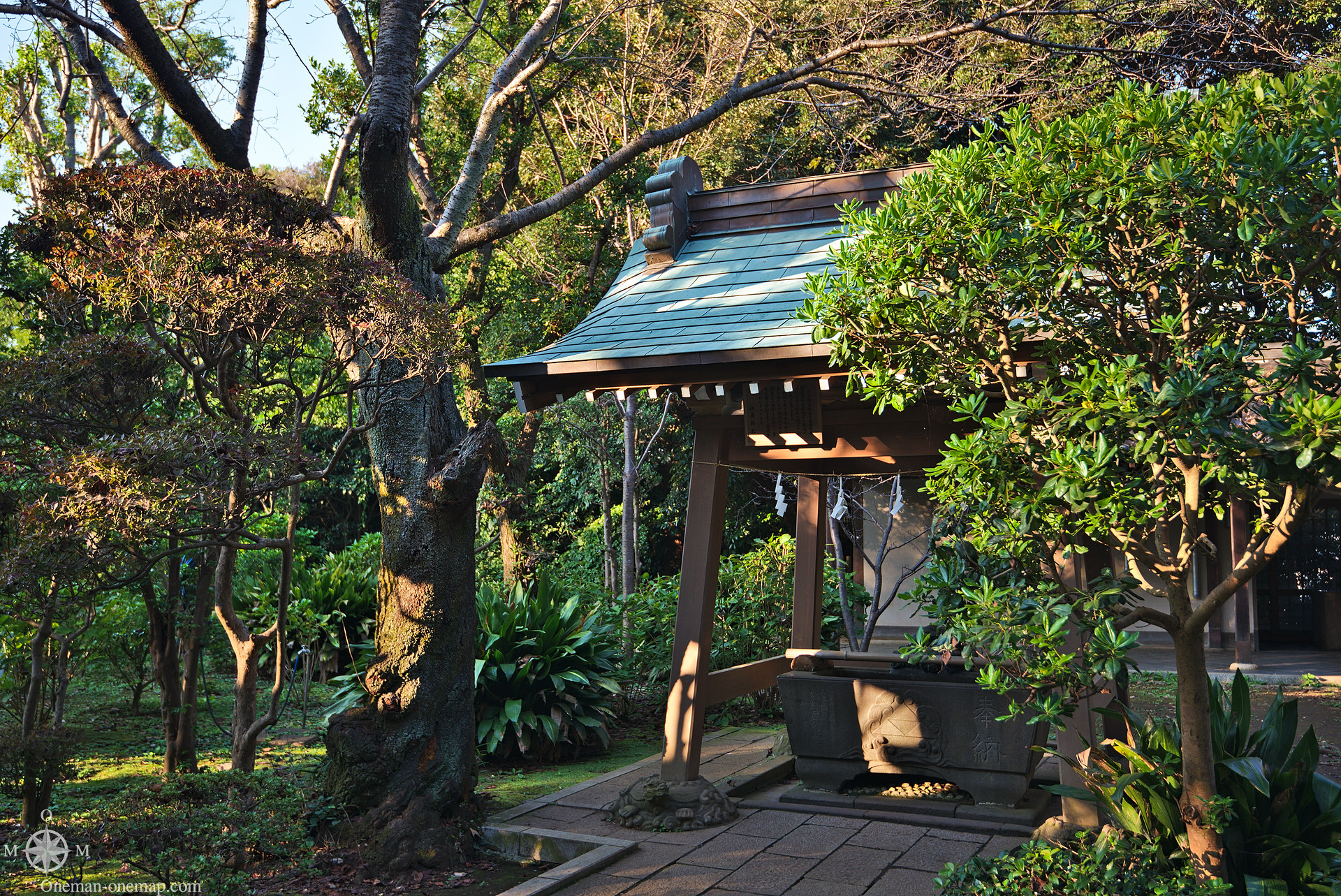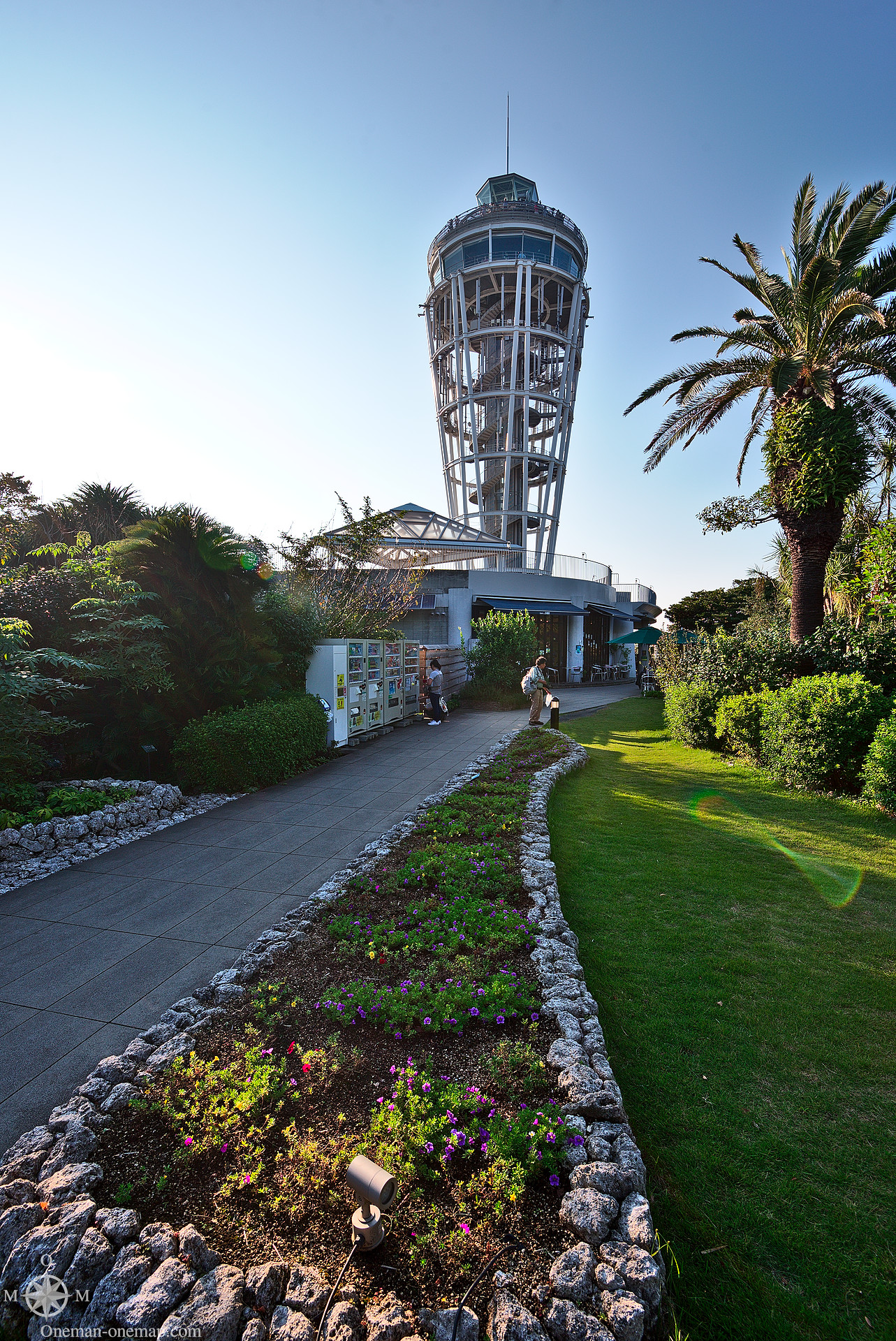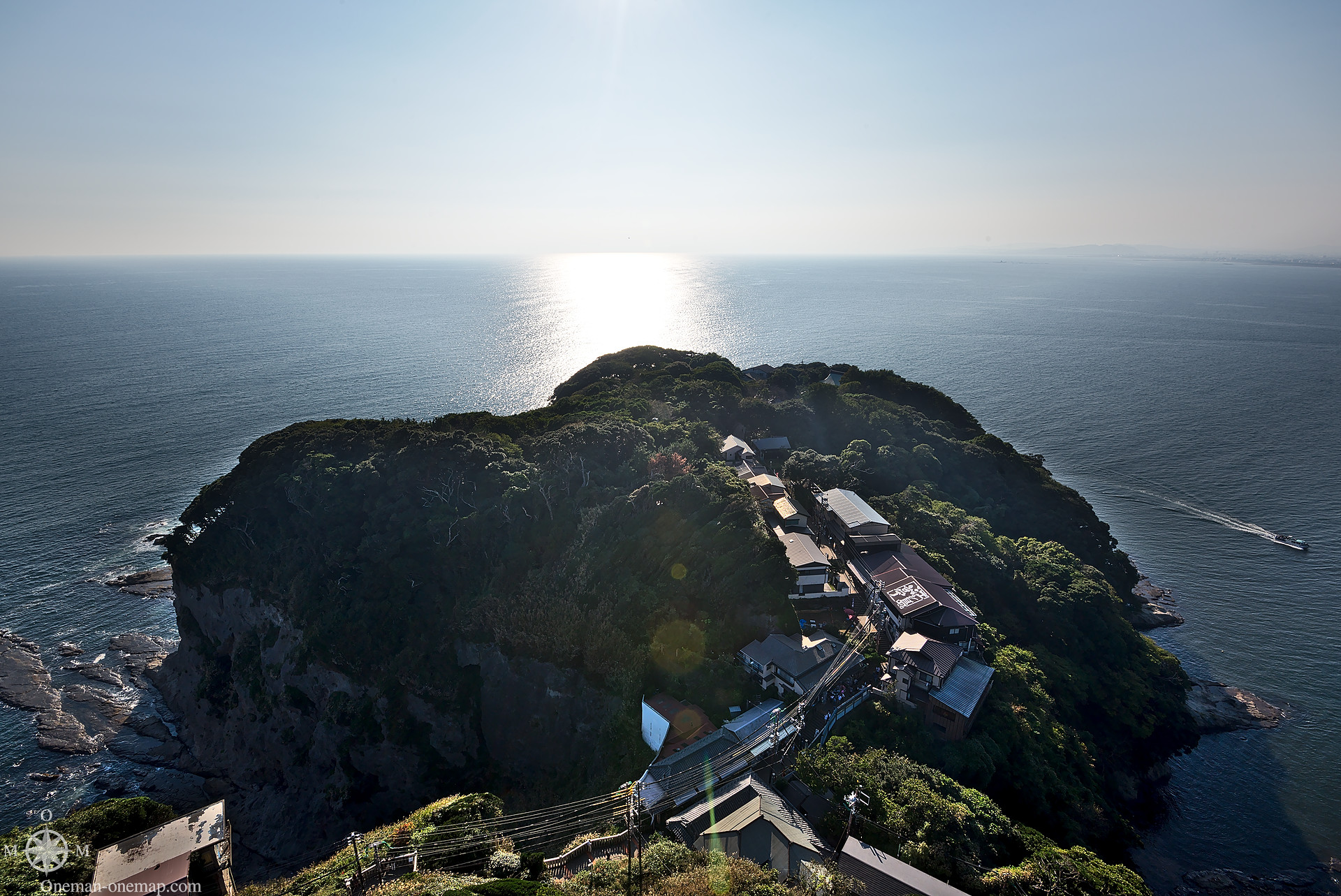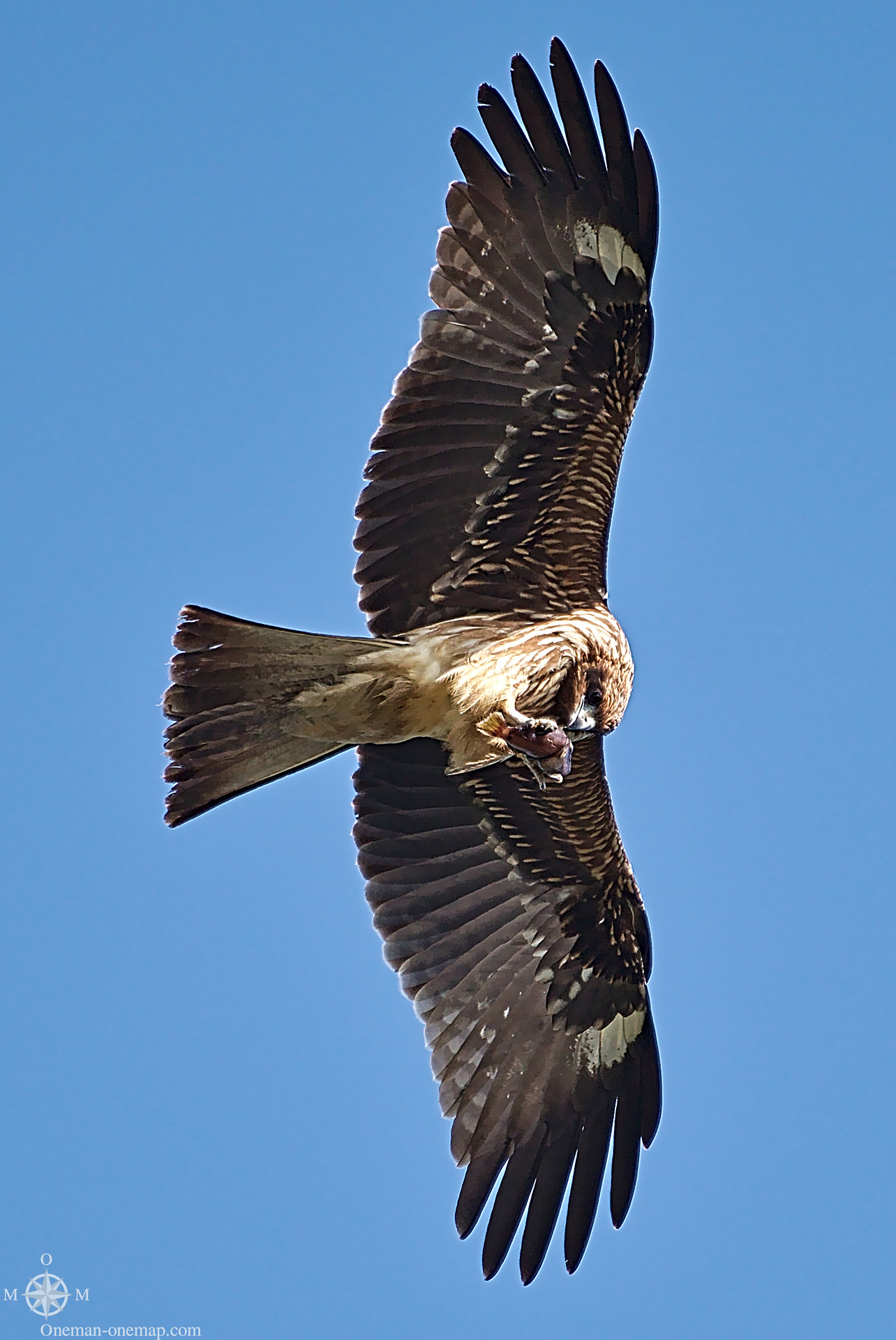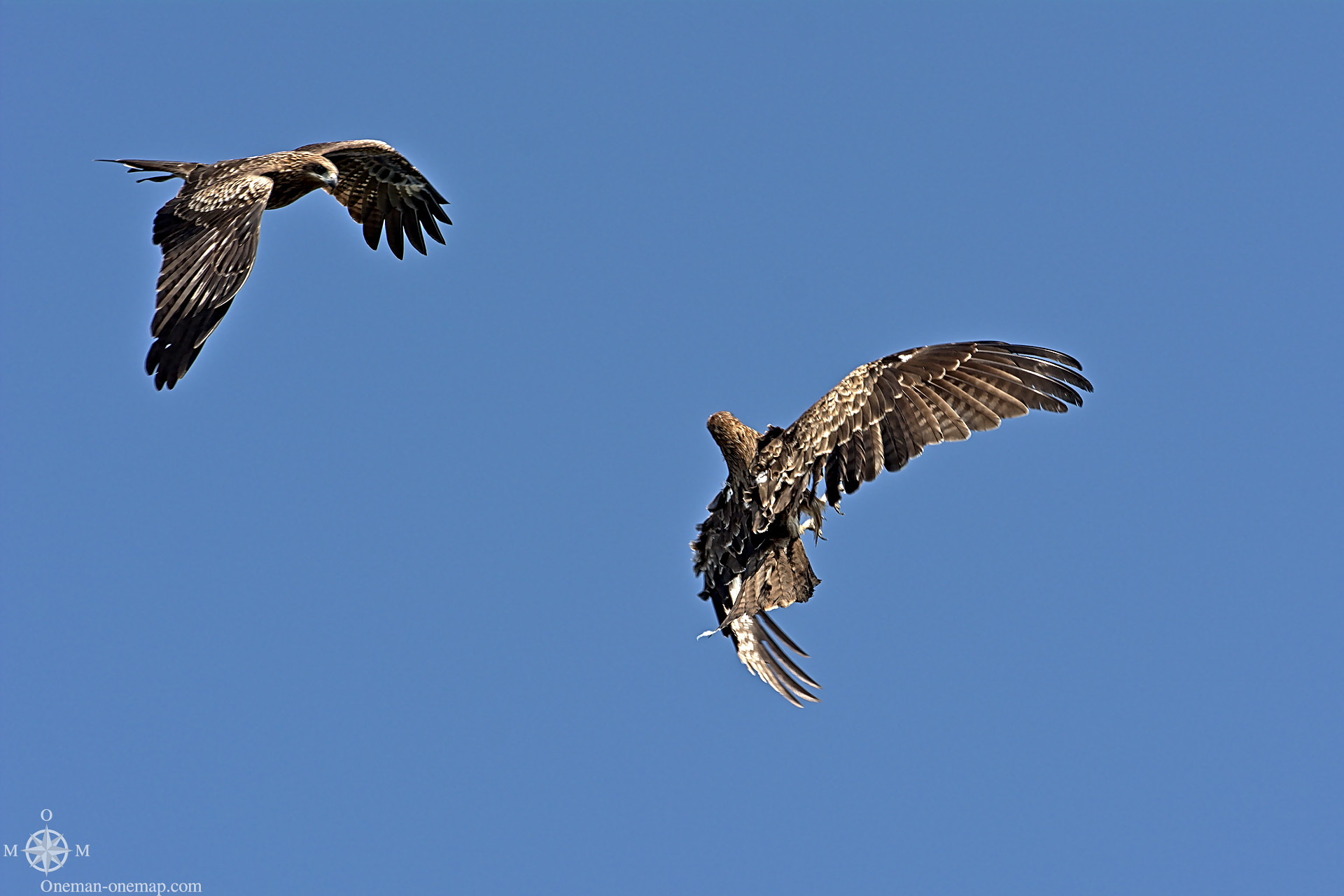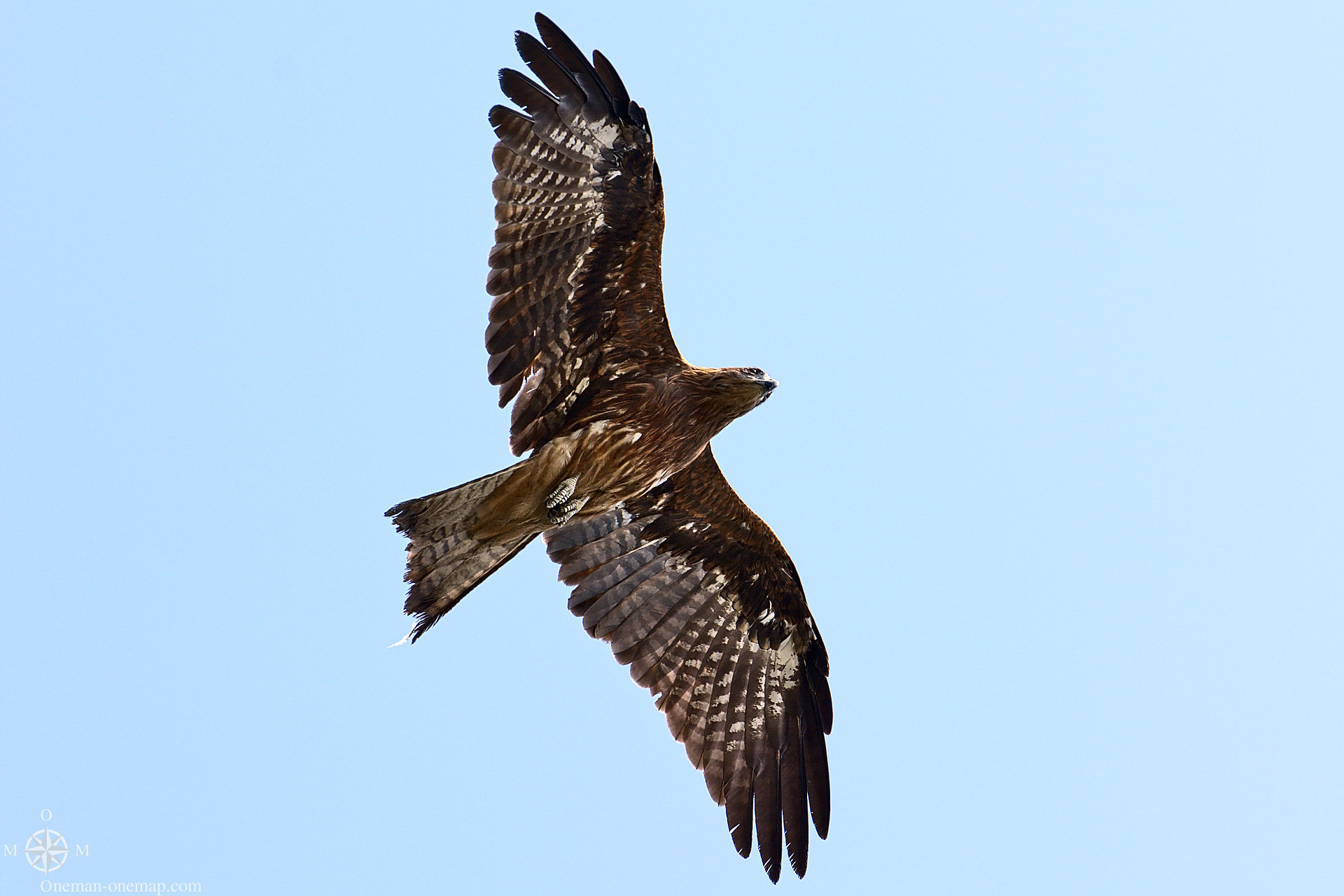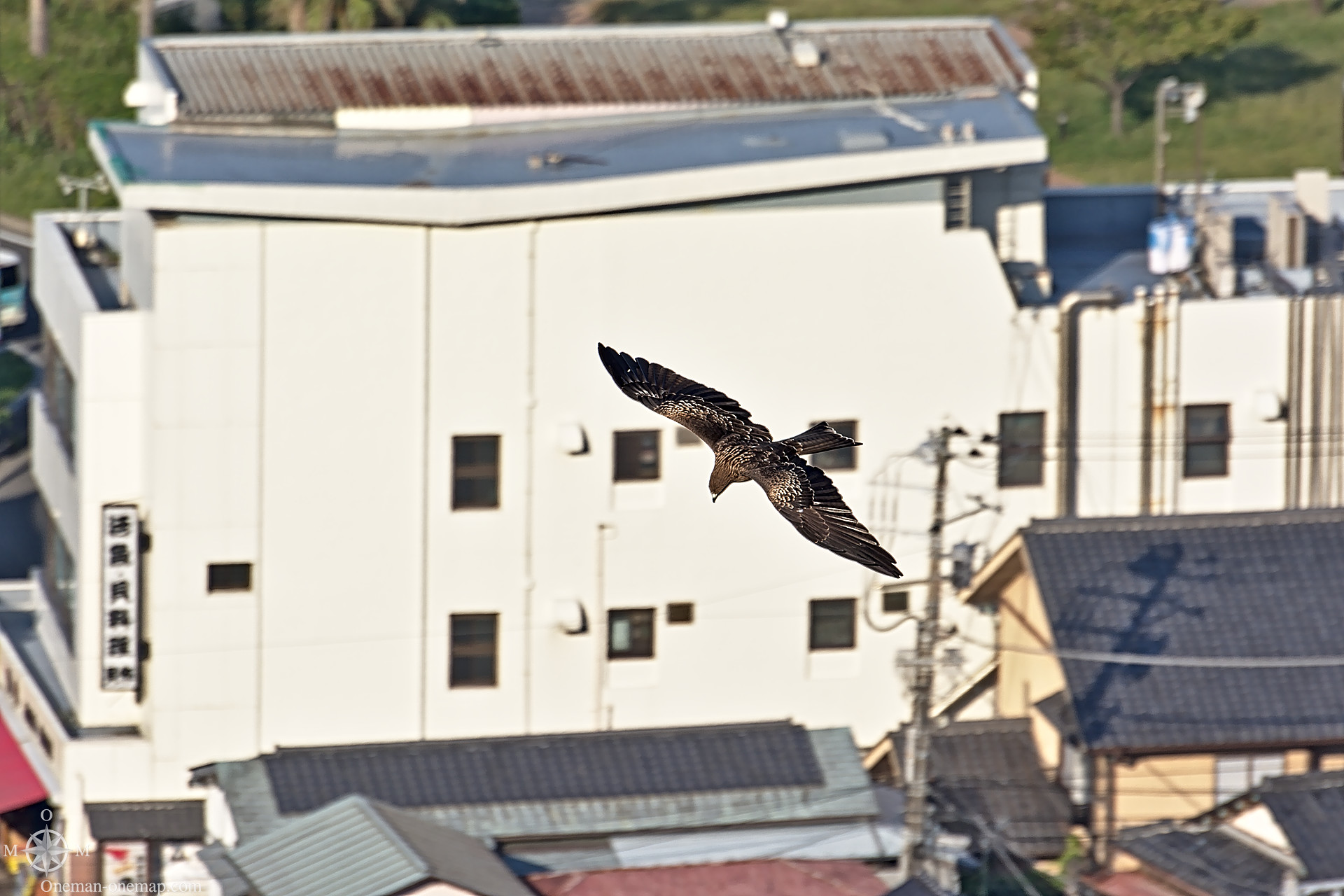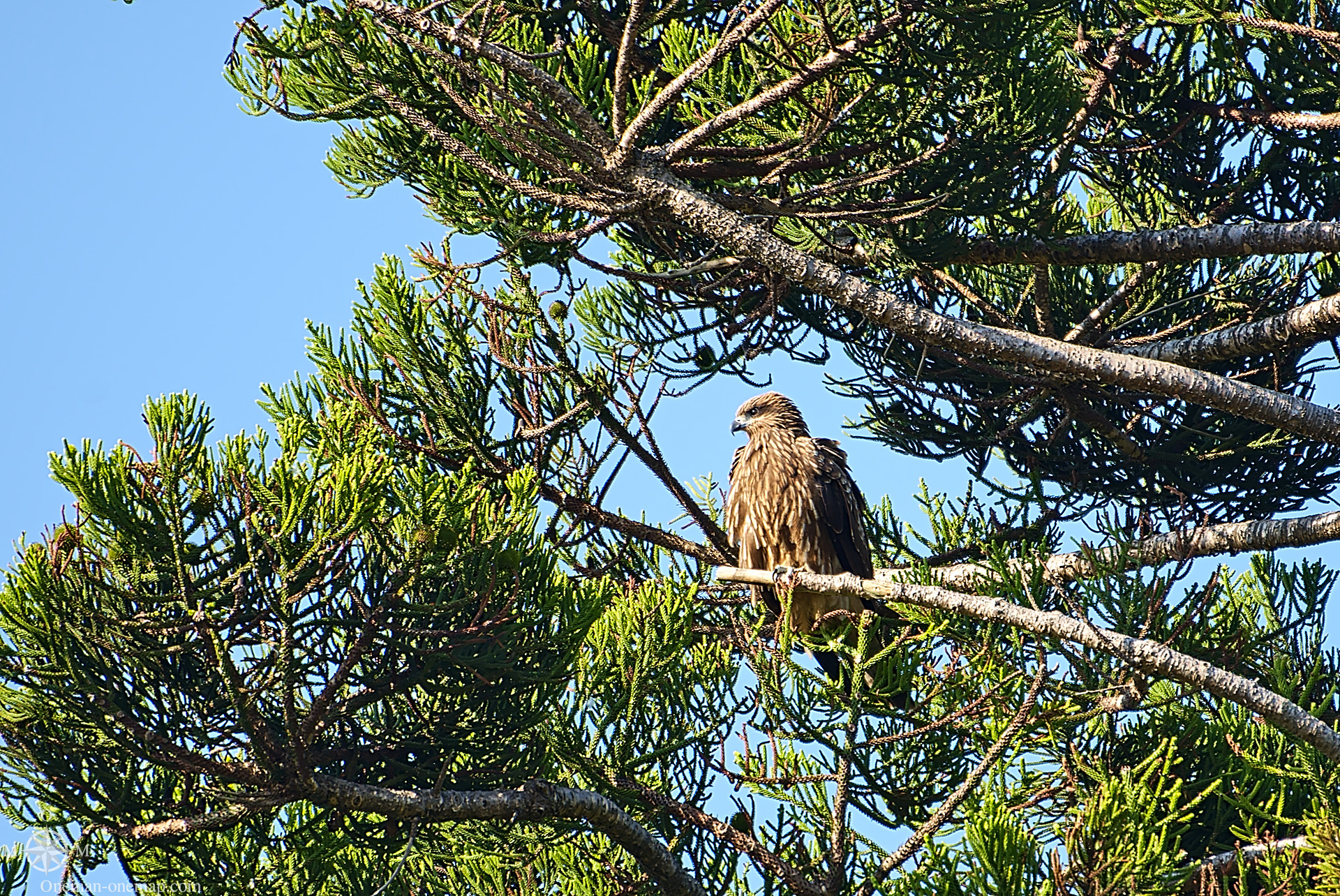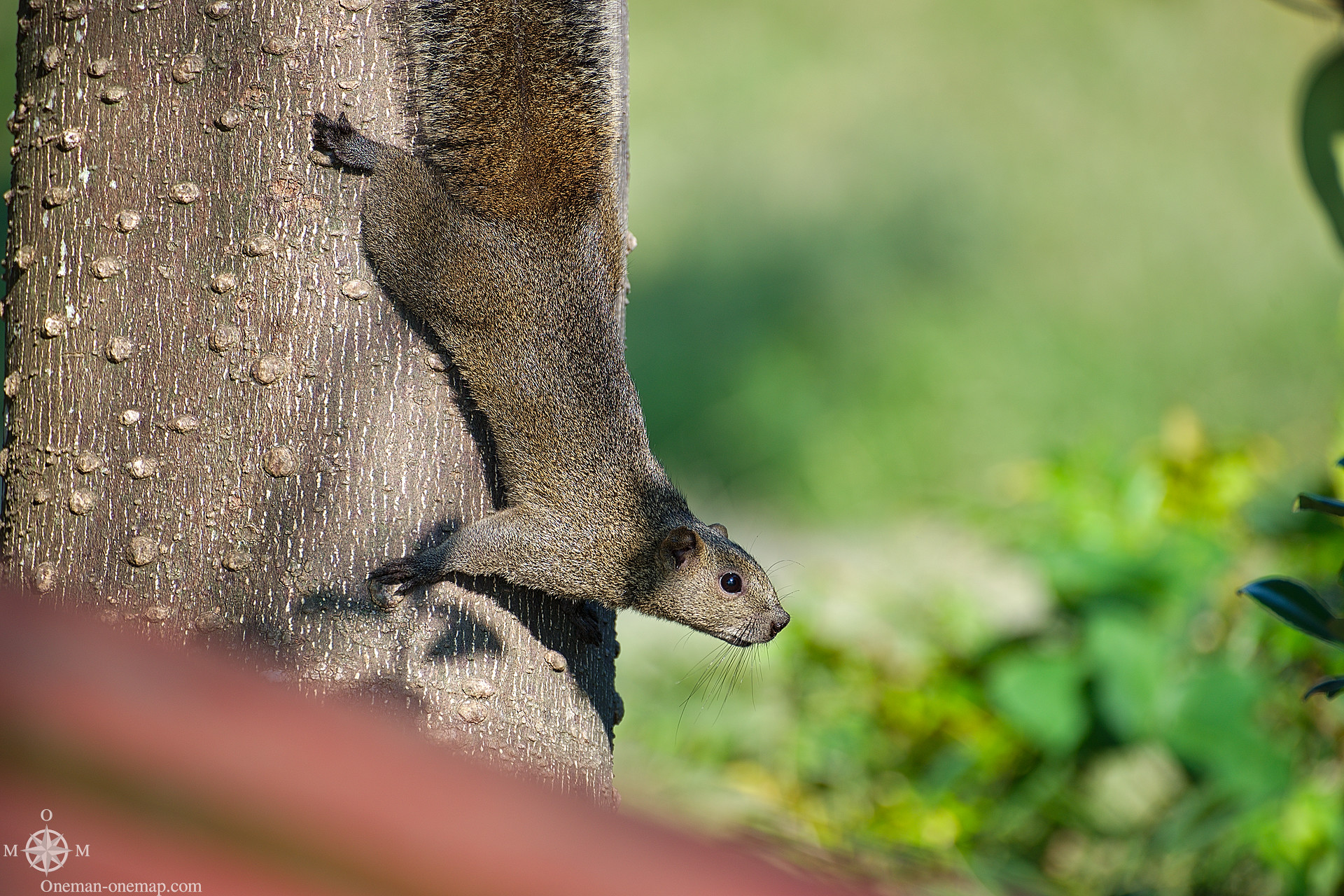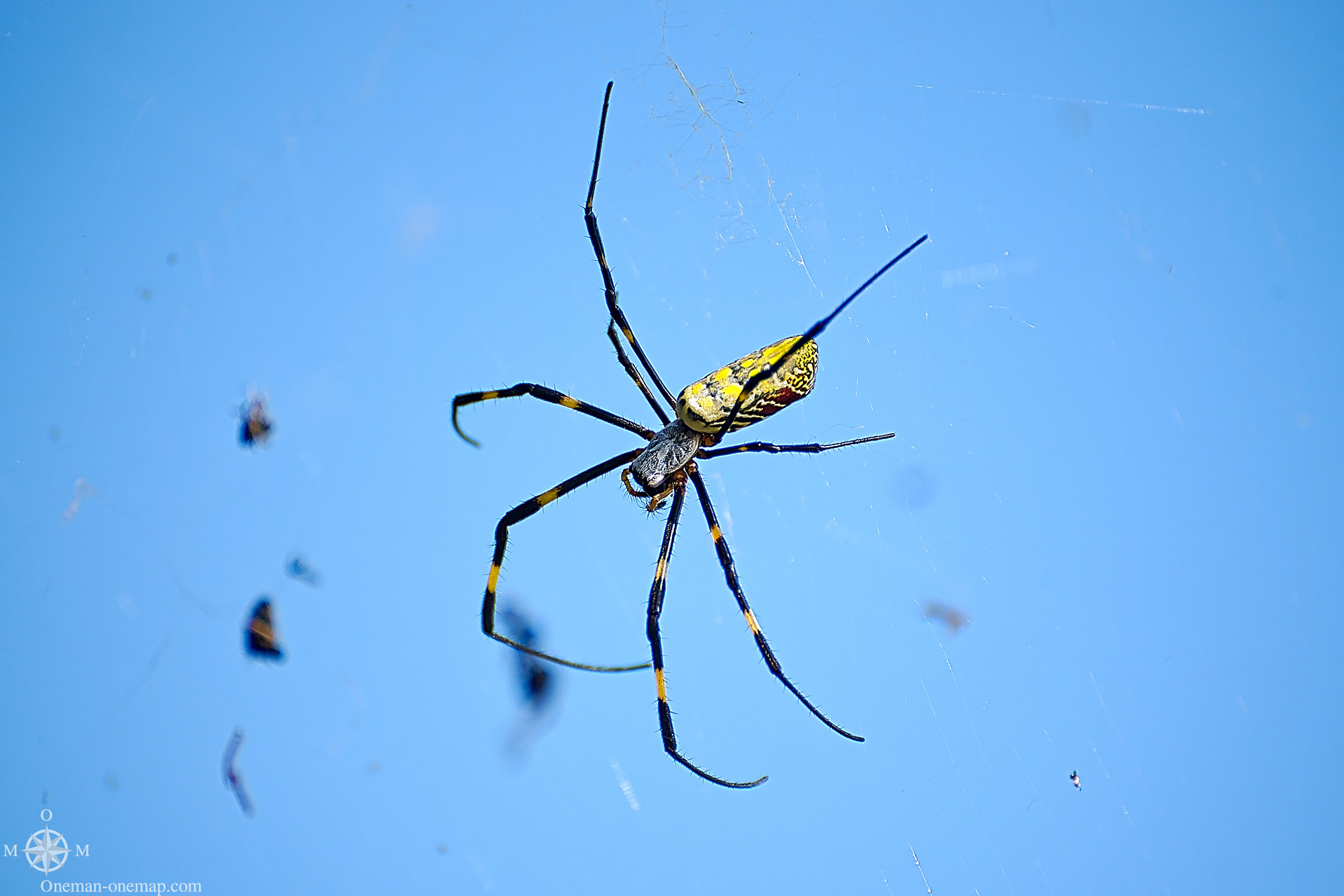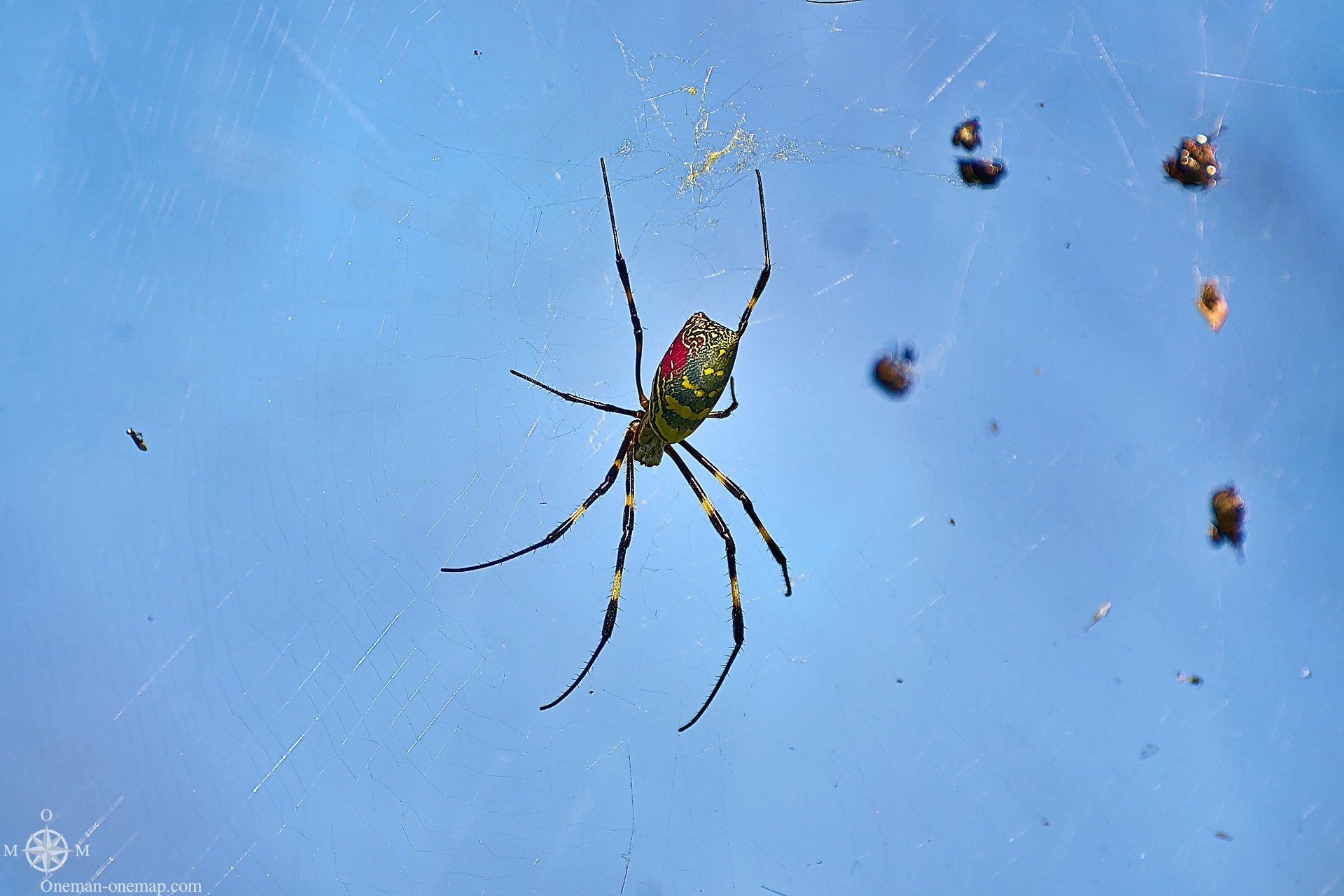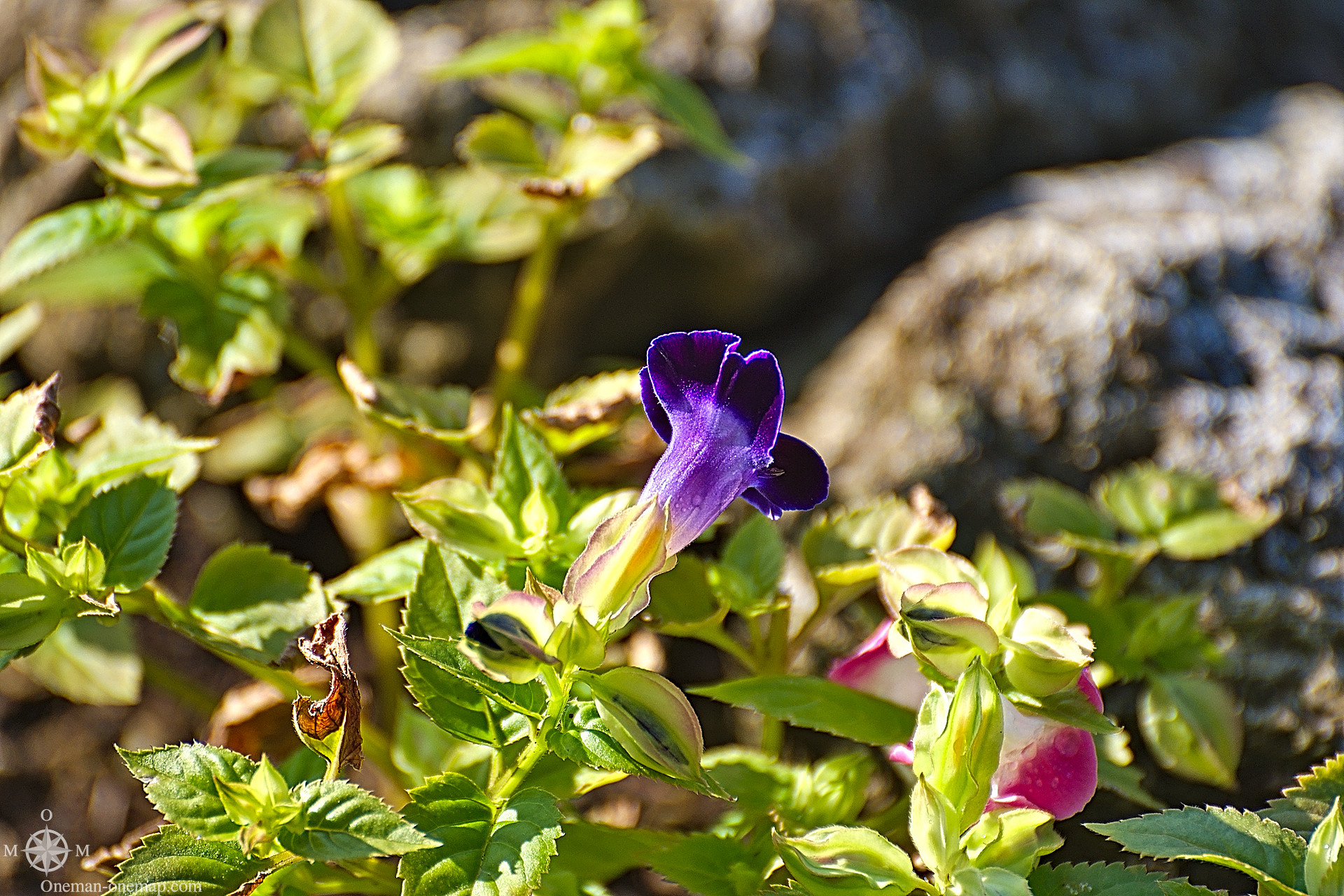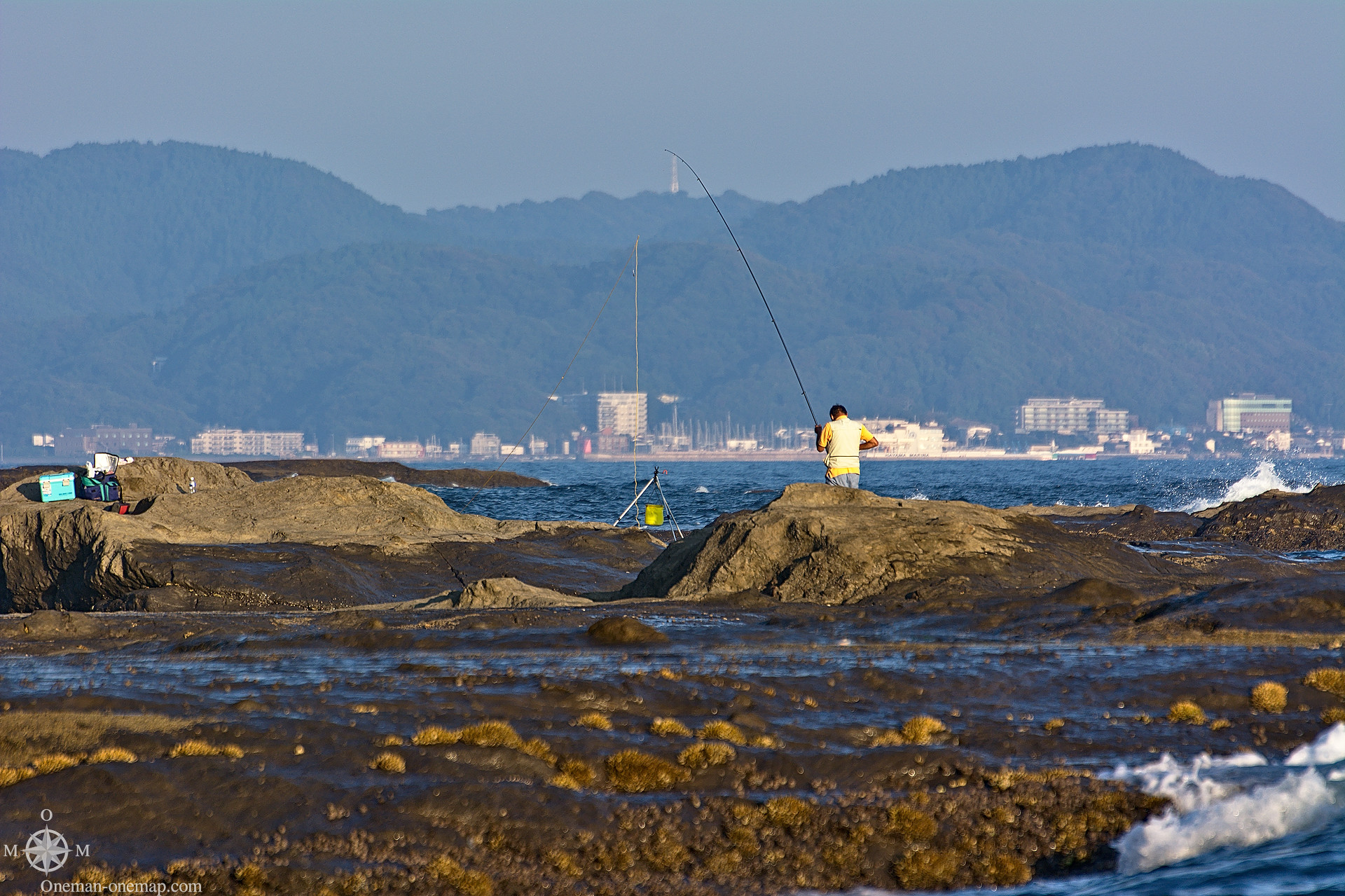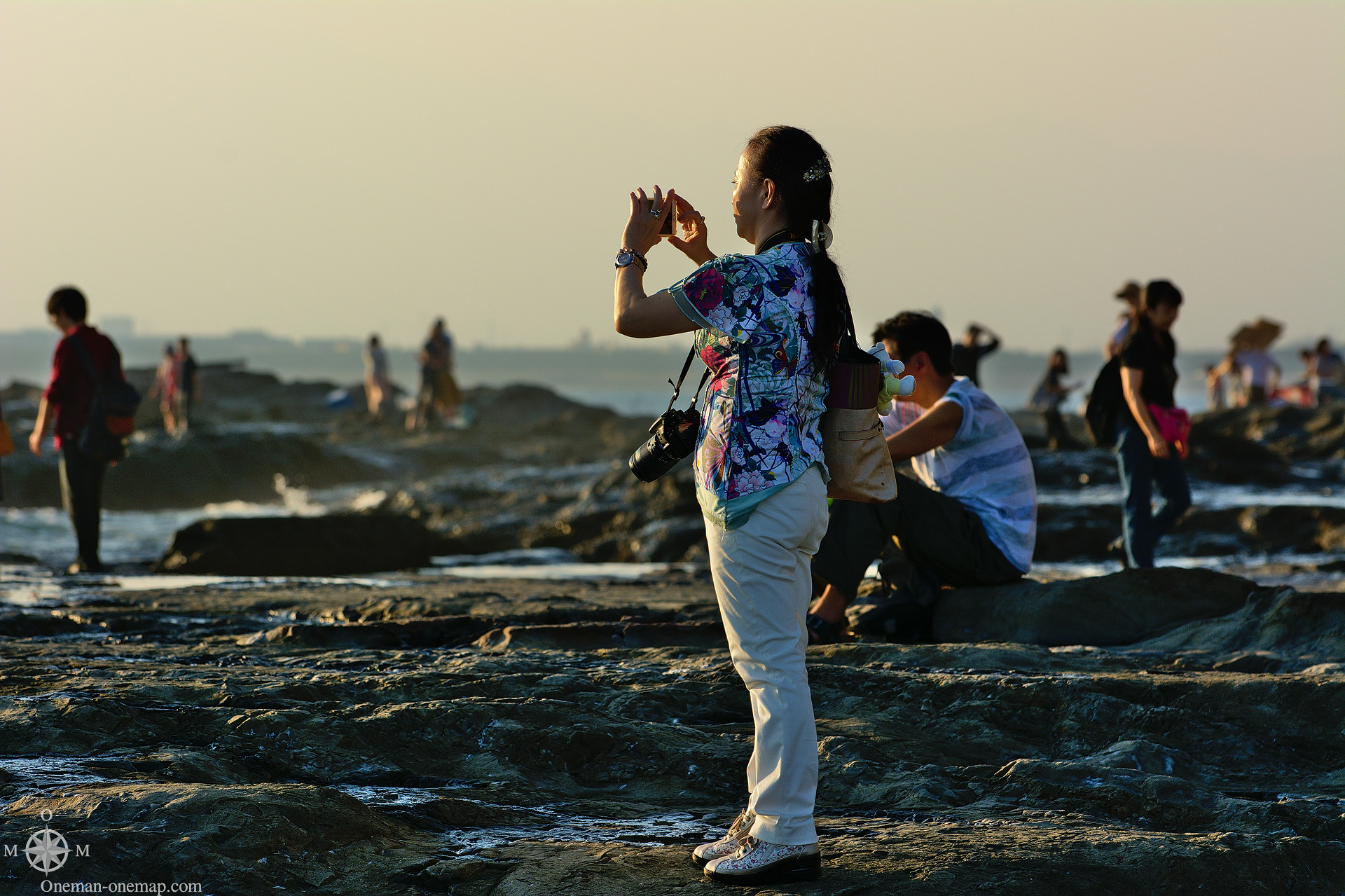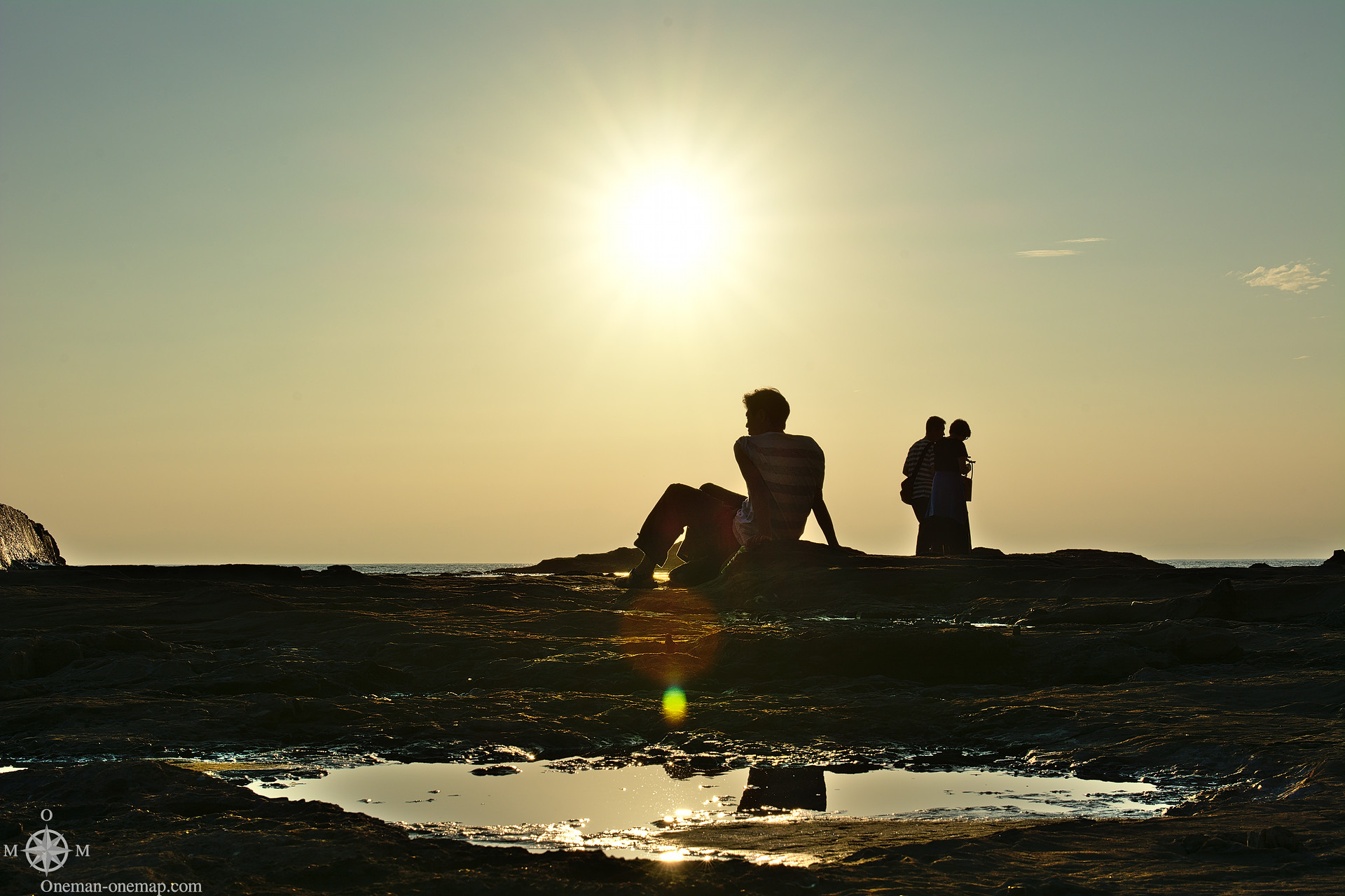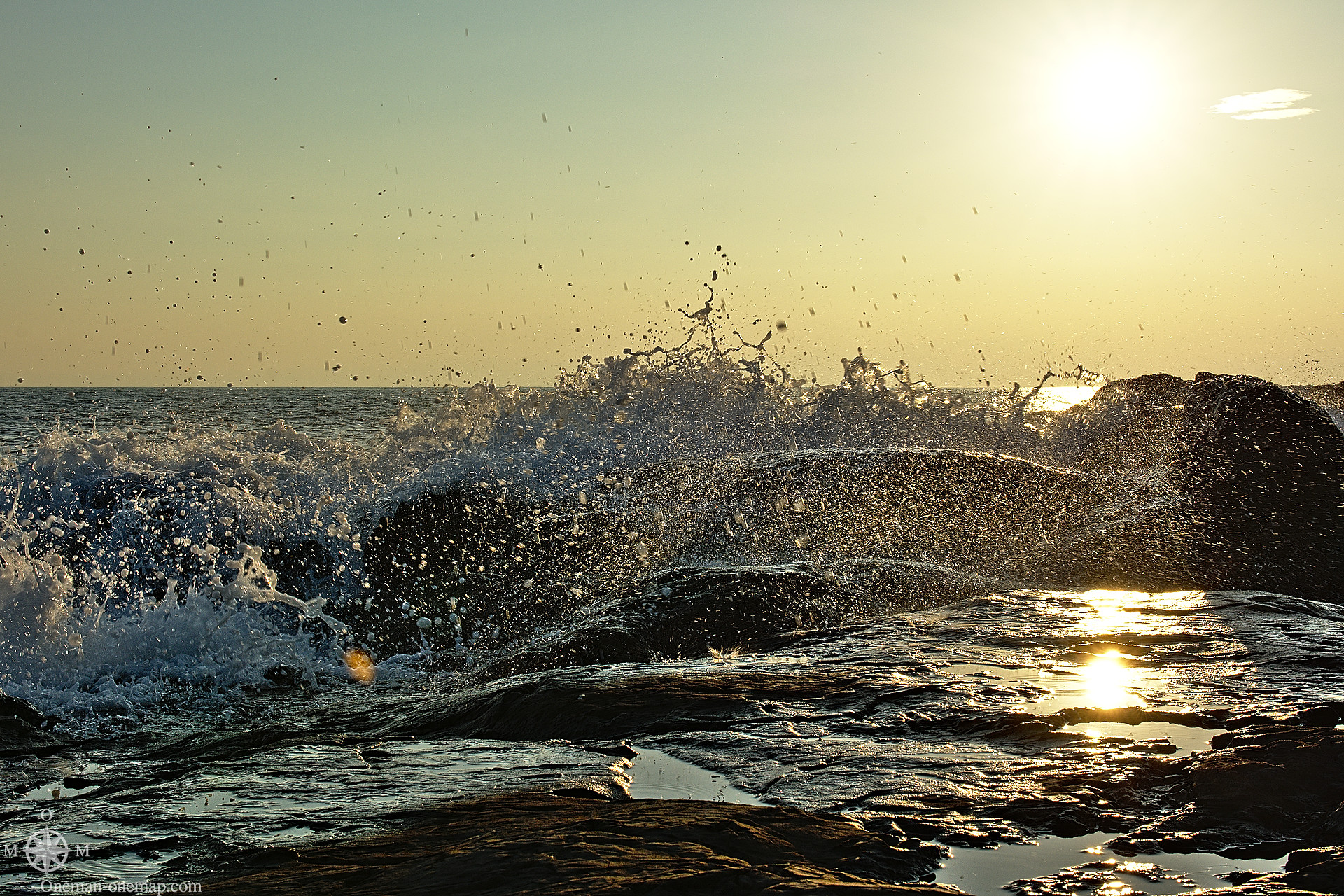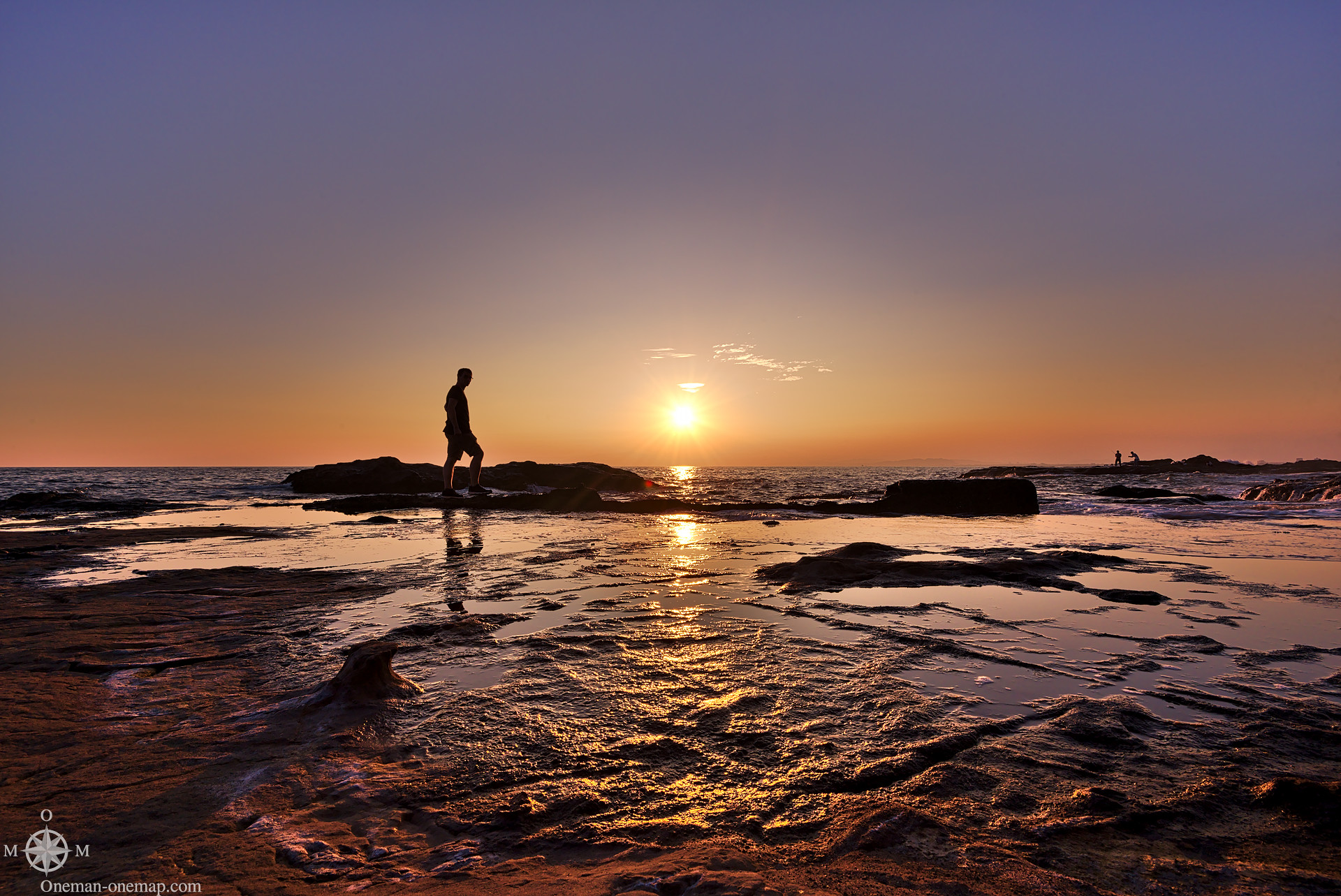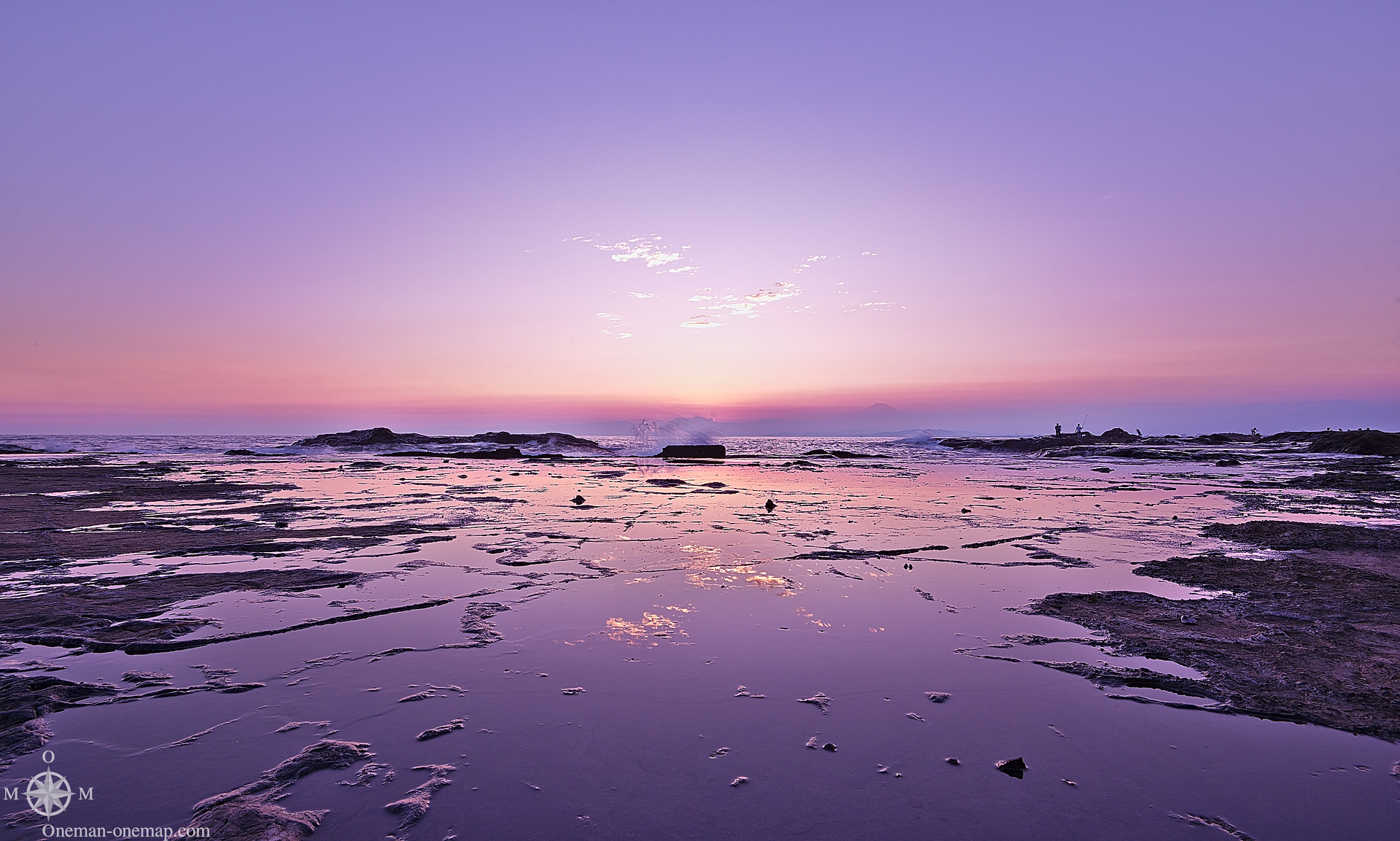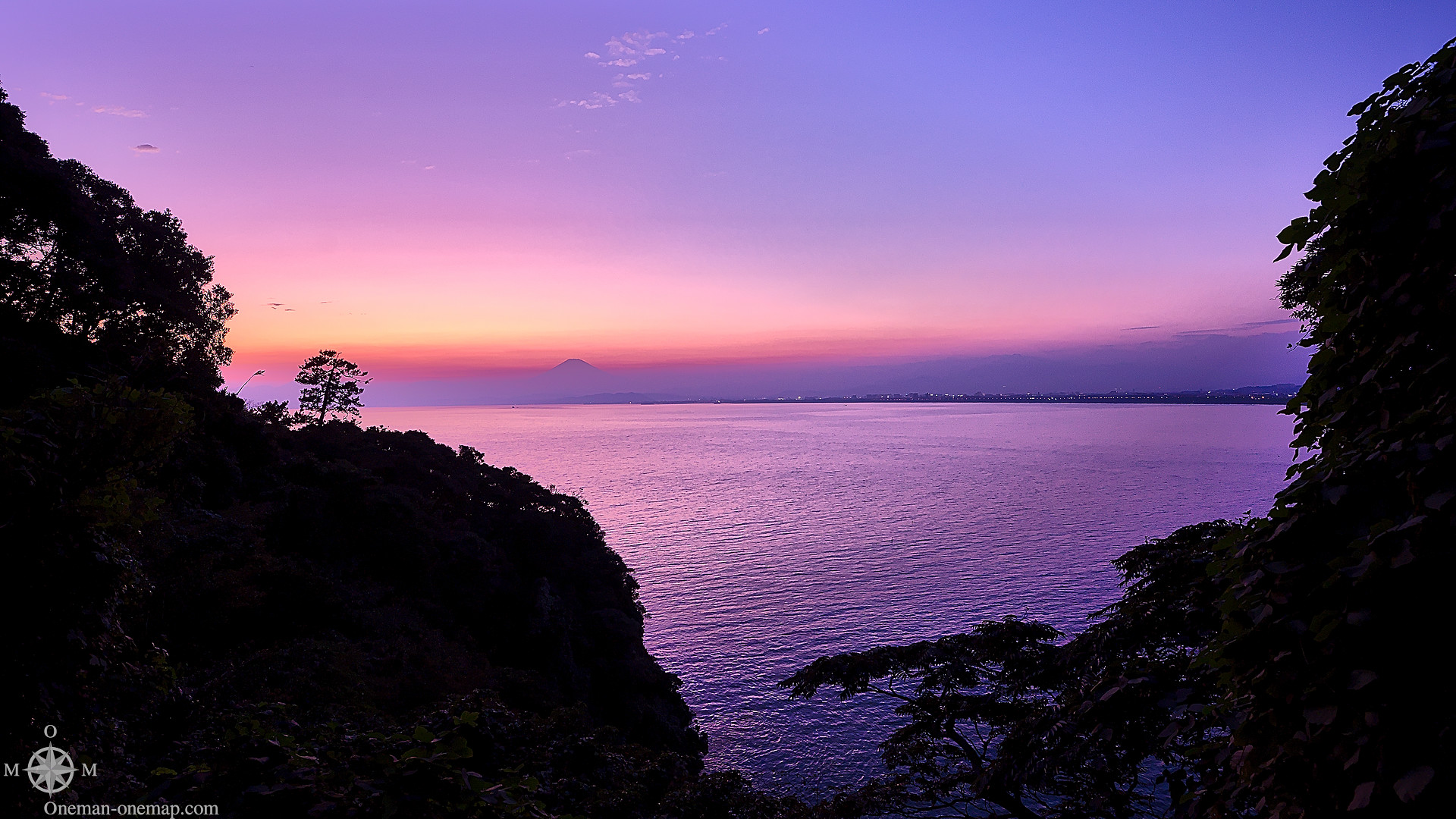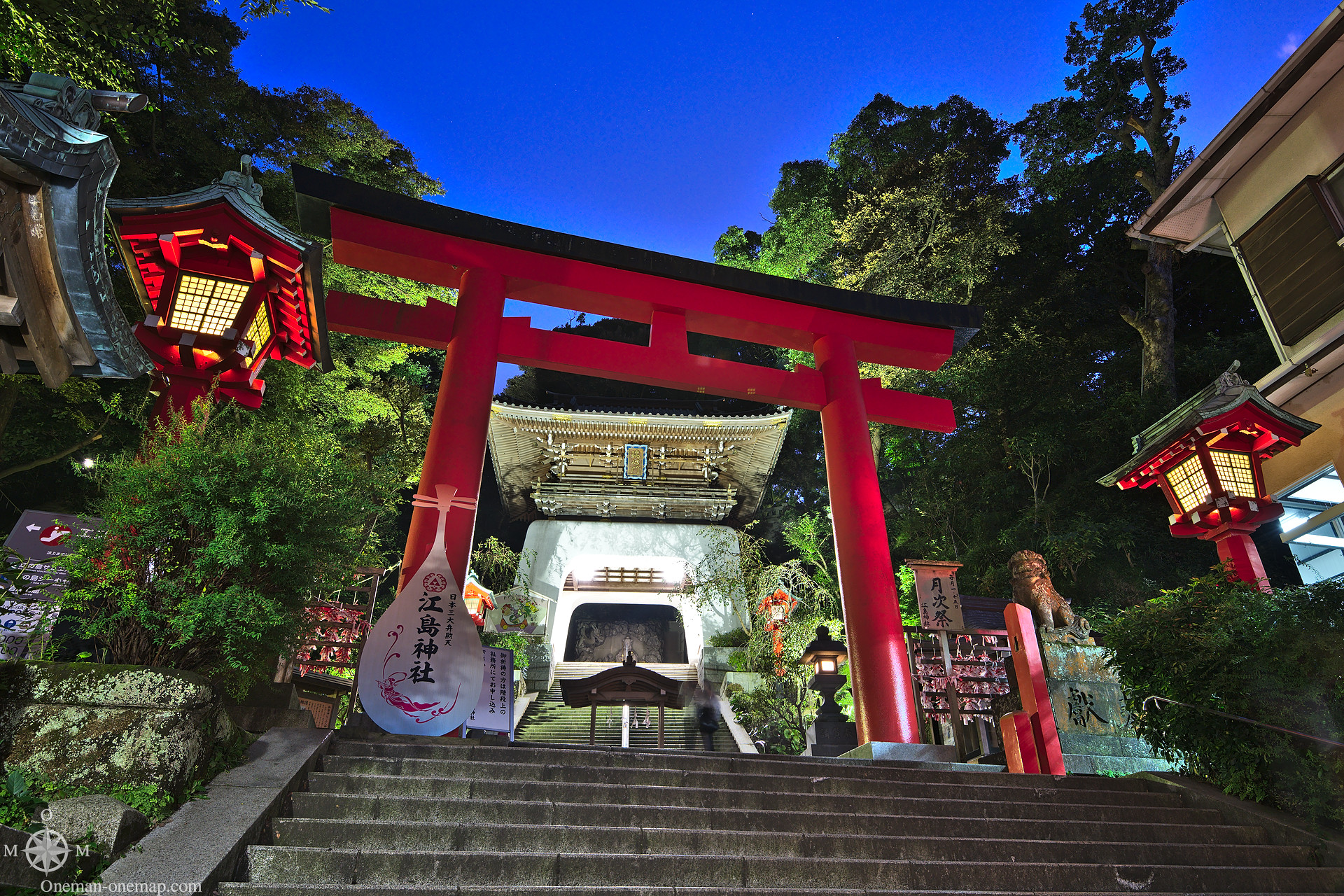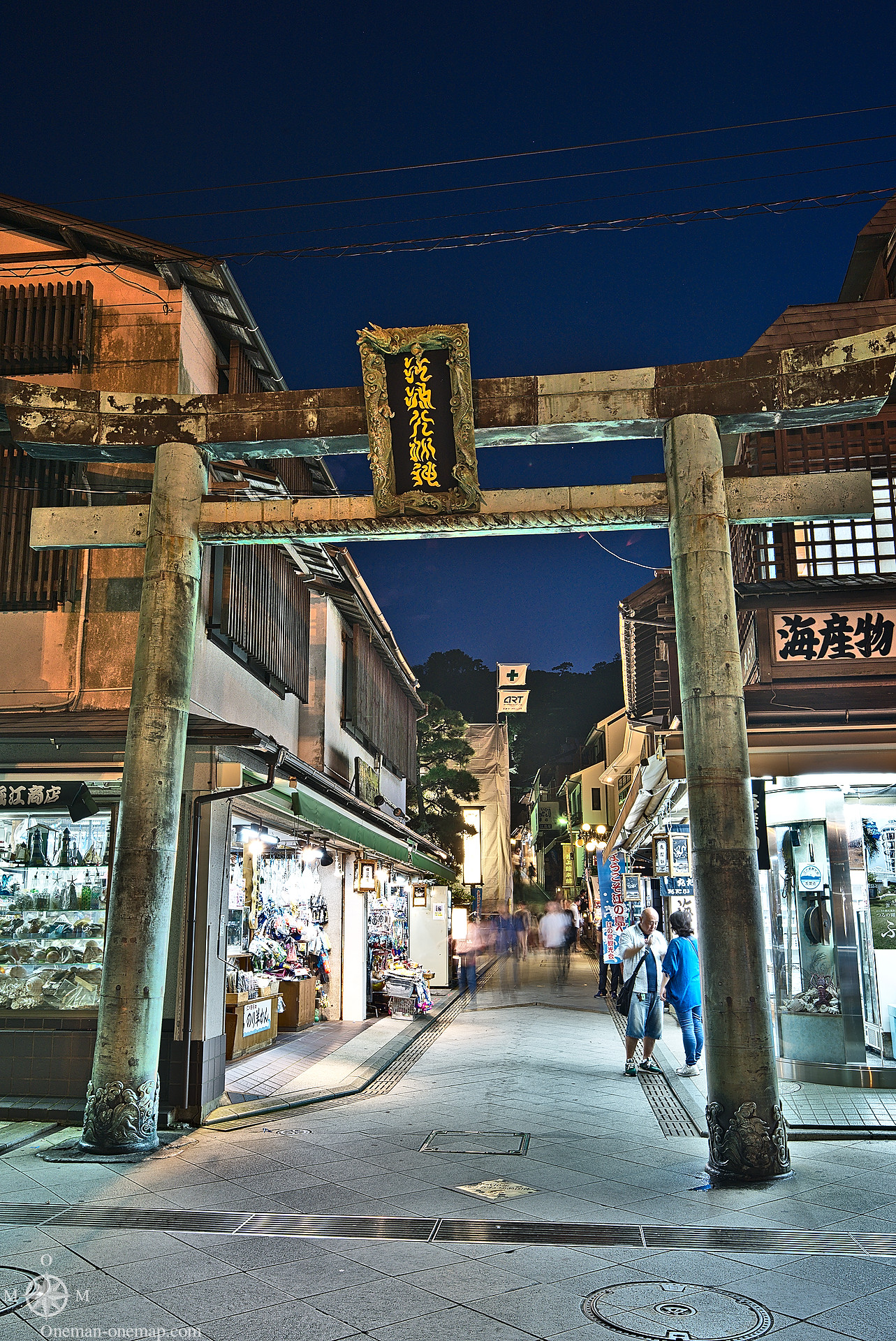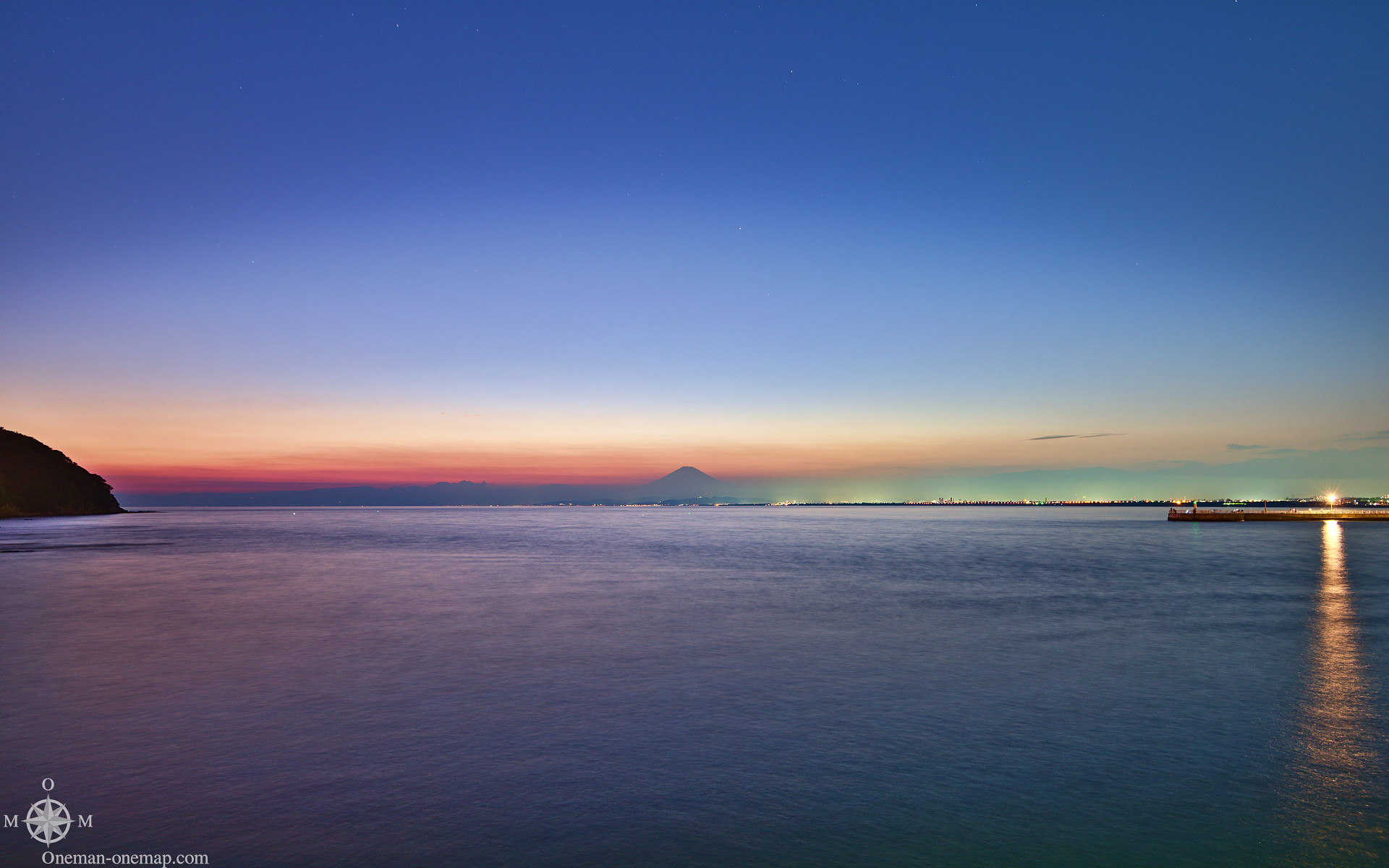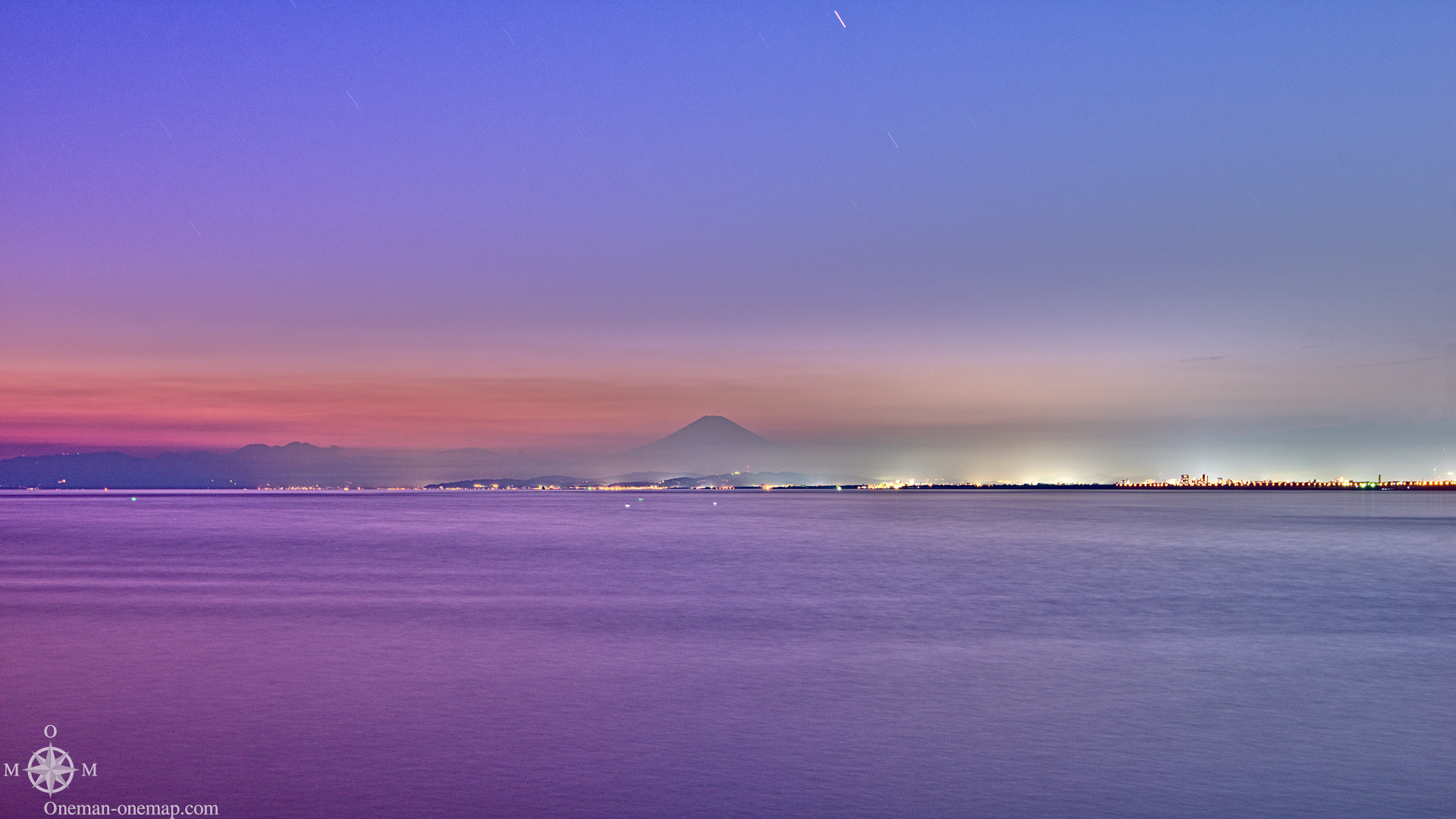Dieser Artikel ist auch auf Deutsch verfügbar. Click here to find out more about Japan!
My itinerary within Japan can be found here, general information about Japan here.
My first stop in Japan was Tokyo, and in contrast to South Korea the weather was excellent when I arrived. But the weather forecast suggested that this would not last long, so I decided to move all day trips forward to the first few days of my visit and see Tokyo later. First destination: Enoshima.
One of my favorite bands is Whispered from Finland. Not only did I get to meet singer and guitarist Jouni Valjakka in Tampere several years ago, but in 2017 I was also allowed to take pictures during a concert in Hannover. Whispered play what some call “Samurai Metal” and have even made it onto Japanese television – just like me 😉
The emergence of the island of Enoshima was immortalized by Whispered in the song “Bloodred Shores of Enoshima”. According to the Enoshima Engi (江嶋縁起) written by Buddhist monk Kōkei (皇慶), the rural population was terrorized for about a thousand years by the five-headed dragon Gozuryu (五頭竜), who lived in a nearby lake. On May 31, 522 (a remarkably accurate date …), Benzaiten (弁才天), a goddess rooted both in Buddhism and Shintō, let the island of Enoshima arise from the sea and then descended onto it accompanied by spectacular phenomenons.
The dragon fell in love with the goddess, but instead of responding to his courtship, Benzaiten showed him how much he had terrorized the rural population. Gozuryu fled in shame and turned into a hill. Benzaiten remained enshrined in the island, and Enoshima became a Buddhist sanctuary. It is believed today that the “five-headed dragon” might have been a river which flooded the fields regularly, and the apparitions in the year 522 might have been related to a meteor.
Nowadays a strip of land and a 600 meter long bridge connect Enoshima to the mainland, but until 1880 the island remained a Buddhist sanctuary and was not open to the public. Afterwards the Briton Samuel Cocking bought up much of the land, built a botanical garden and a harbor. The Port of Shonan on Enoshima was a venue of the 1964 Olympic Games and will be used for the Olympic Games again in 2020.
The sandy beaches of Fujisawa and Enoshima are a popular recreation area for the residents of Tokyo, and that’s why three different train lines run to three different stations in the district Katase near the bridge: The Odakyu-Enoshima Line to Katase-Enoshima Station (片瀬江ノ島駅), the Enoshima Electric Railway to Enoshima Station (江ノ島駅), and the Shōnan Monorail to Shōnan-Enoshima Station (湘南江の島駅). I used the Odakyu-Enoshima line for the ~30 kilometers from Shinjuku Station, at a price of 970 Yen (about 7,50 euros) each way.
The southern shore of the island is covered by a small village with restaurants and souvenir shops, after that long paths and steep stairs lead through the religious sanctuaries. The tip of the island is about 150 meters above the sea level, after all. if you don’t feel like walking, you can ride the the escalator for 360 Yen (about 2,60 euros). I’ve heard the shrine staff has a Whispered CD, maybe they agree to play it while you’re waiting to ring the bell… 😉
As I have already explained in the Introduction on Japan, holy shrines and sanctuaries are offered to the visitors like a service. There are no church taxes or membership fees because Shintō does not count as an organized religion for the vast majority of people. Each person chooses on their own which shrine to visit, often based on the deity to whom the shrine is dedicated. Benzaiten, for example, stands for eloquence, wisdom, music and art and is therefore considered the patron of Geishas, musicians and dancers. Since she is also associated with water, dragons and sea snakes, her shrines are usually placed on islands, dams or bridges.
The visitors donate money to the shrines, but also get something in return. Virtually every donation is tied to a ritual. Whether you throw coins into a well and then pour water over your hands with the trowel, or buy little notes with prophecies, or label small signs with your wishes – there is a lot to do in every major shrine.
The rules for the prophecies always deviate a bit, but mostly they work like this: if the prediction was positive or neutral, you keep the note. If it was negative, you tie it to the long wires in the shrine so it will hopefully be invalidated:
Countless lovers had written their names onto the signs at this wall. Benzaiten is usually regarded as very jealous, though, which is why couples usually should not go to the shrines dedicated to her together…
At the top of the island there are pagodas, viewing platforms and the rather small Samuel Cocking Garden (江の島サムエル・コッキング苑). I didn’t enjoy the garden much, but for a total of 700 Yen (about 5.10 Euros) you can go up the Sea Candle, a 60 meters tall viewing tower.
From the Sea Candle you have an excellent view of the mainland and the southwest of the island. Somewhere beyond the horizon lie the Izu Islands (伊豆諸島), a group of twenty islands which still belong to the prefecture of Tokyo – even though “Lot’s Wife” rock Sōfugan (孀婦岩) is located in the middle of the sea about 650 kilometers from the city.
Enoshima is above all a paradise for nature lovers. At the beginning of October I was still dashing from shadow to shadow in a T-shirt and shorts, while countless black kites fought over territories and food in the sky, squirrels escaped the black kites, and palm-sized spiders spun their nets from tree to tree.
At the southwestern tip of the island you descend to a vast beach landscape made of sharp rocks. This is also where the two Iwaya Caves are located.
On the way back along the western side of the island I once again had an excellent view over the sea, the sunset and Fuji-san (富士山), the sacred landmark of Japan. Then I went back to the train station via the bridge.
Next stop: The Hakone Volcano! 🙂
This post was written by Simon for One Man, One Map. The original can be found here. All rights reserved.

